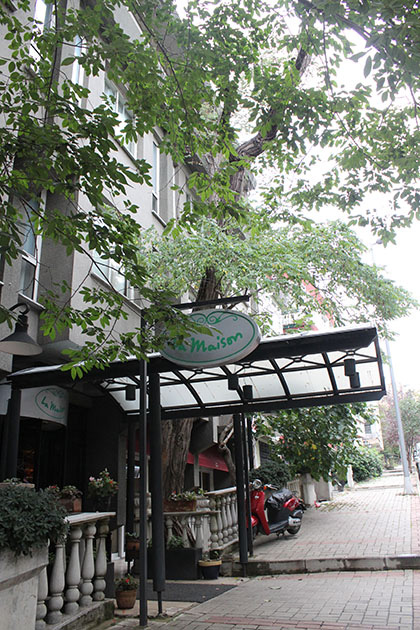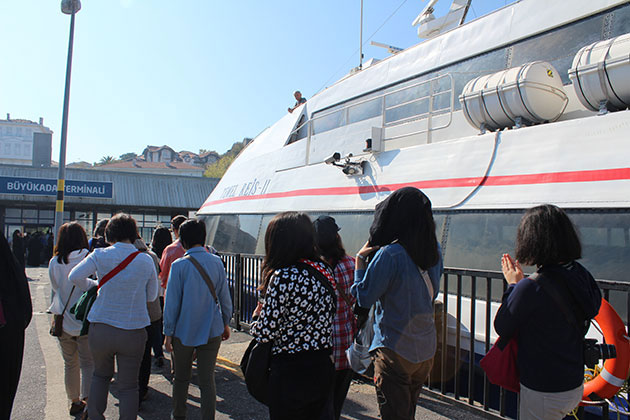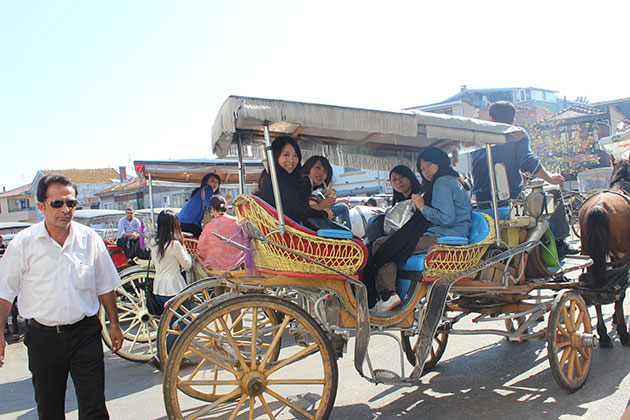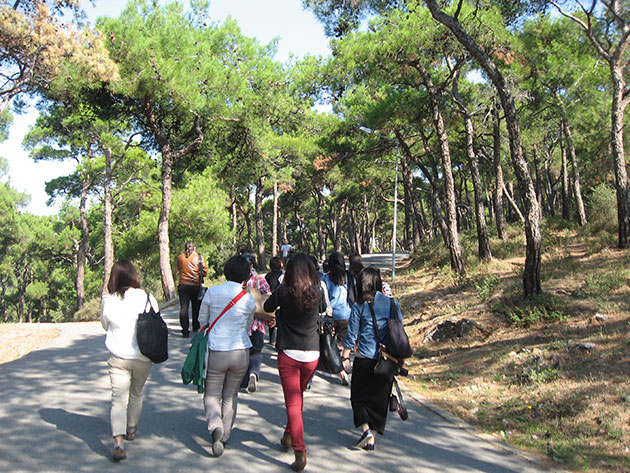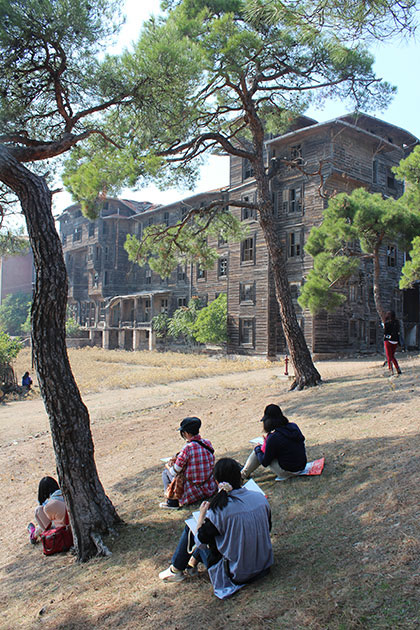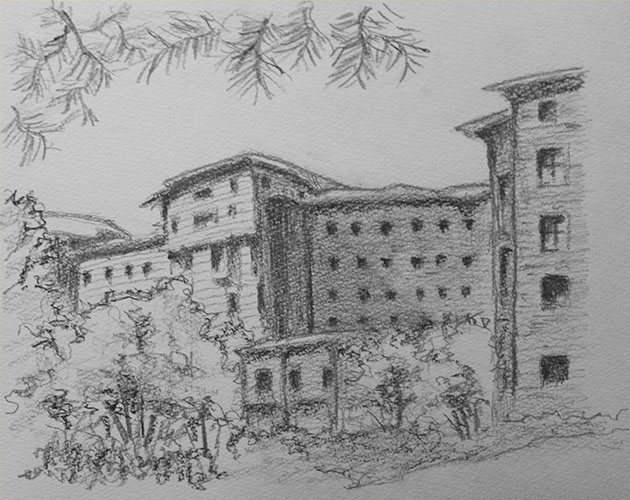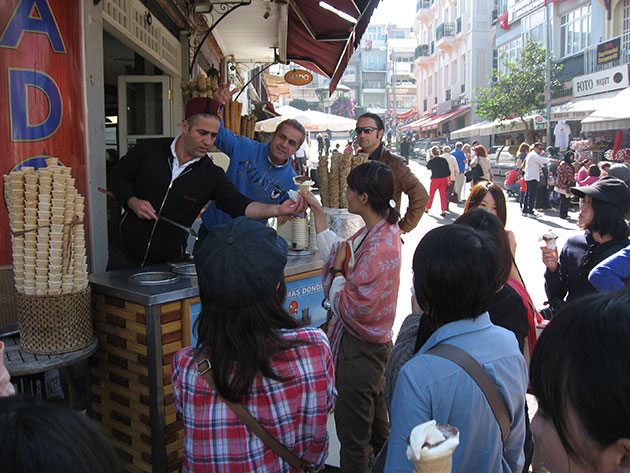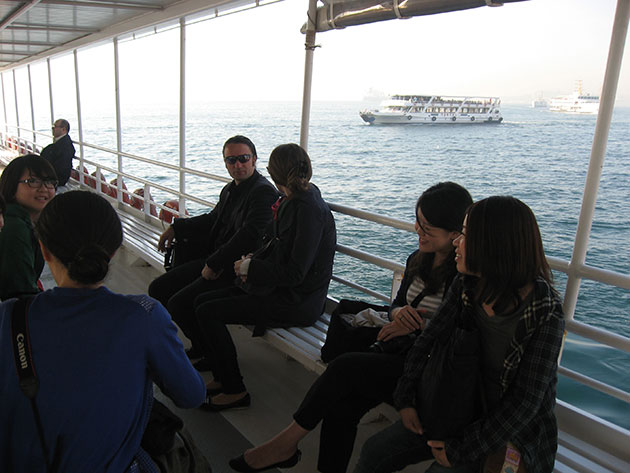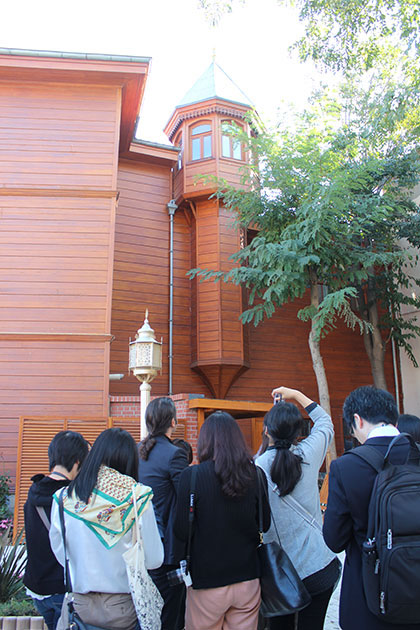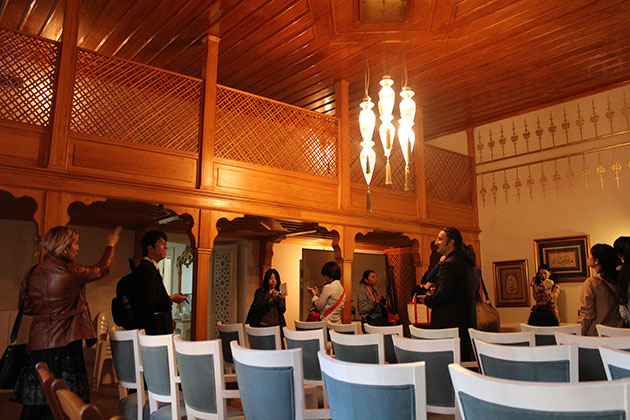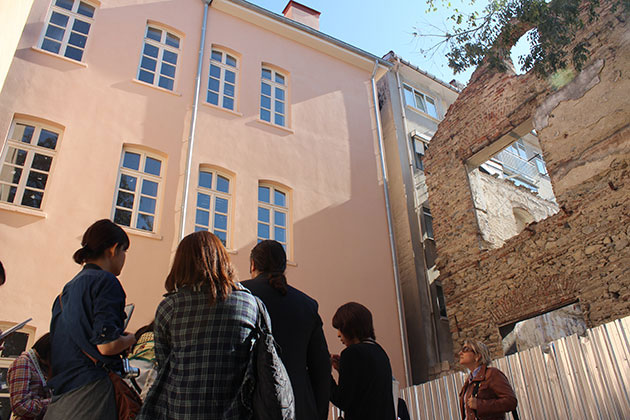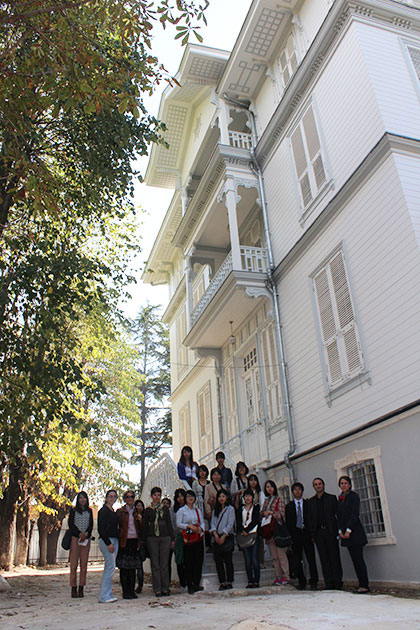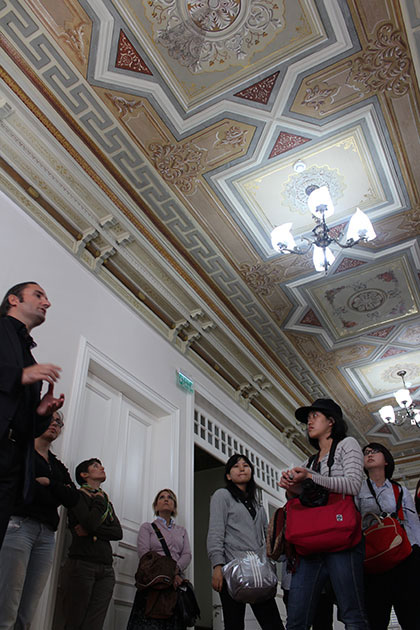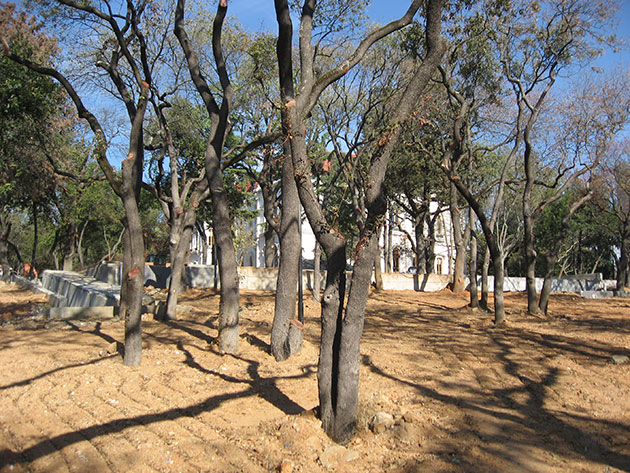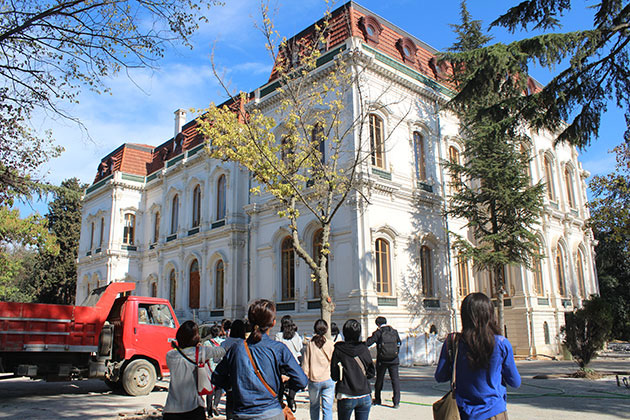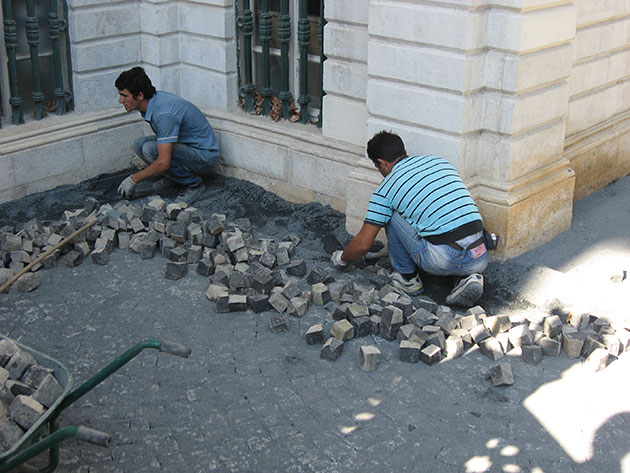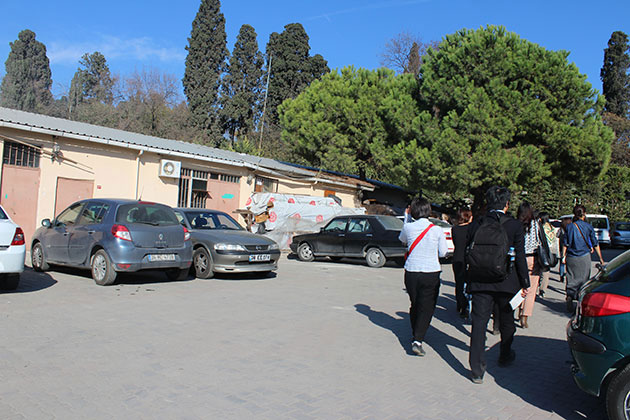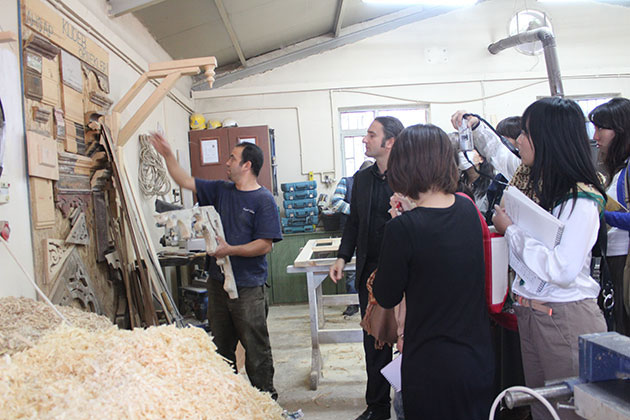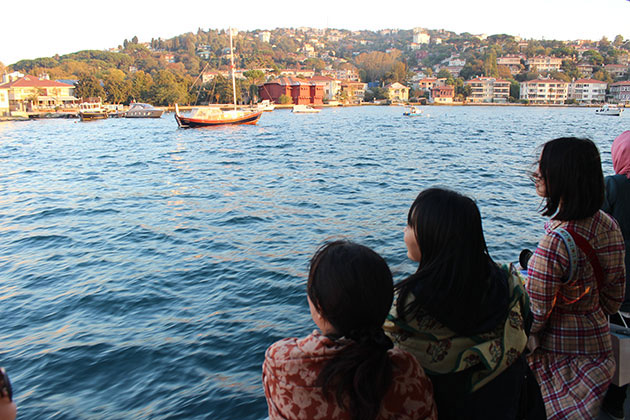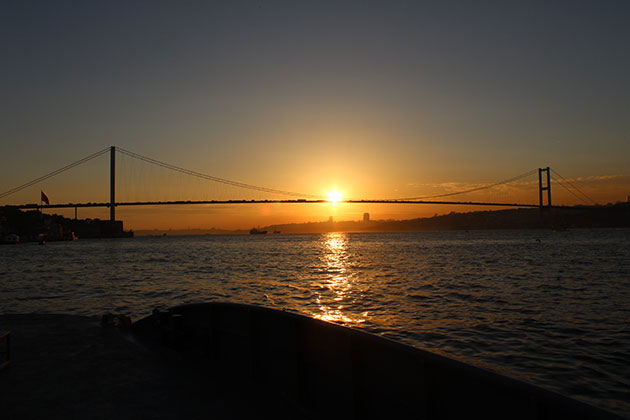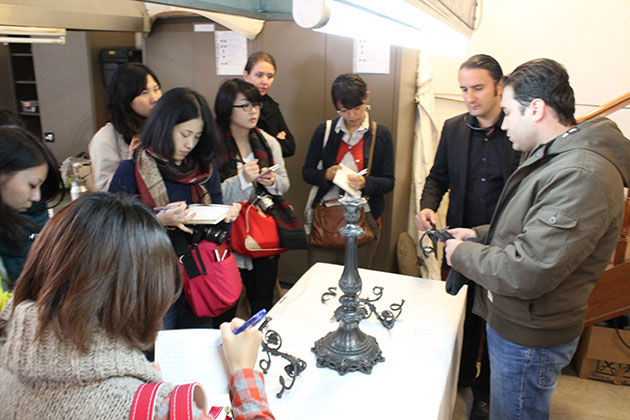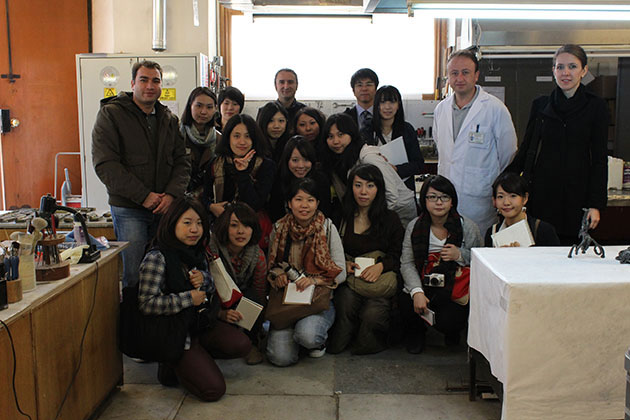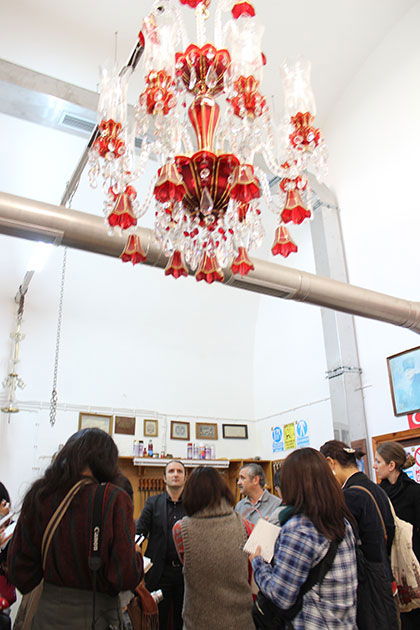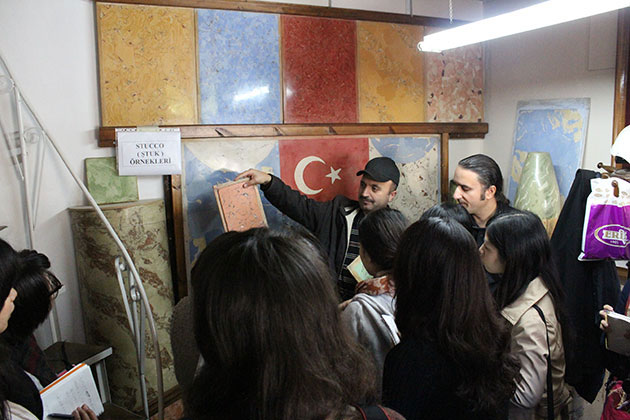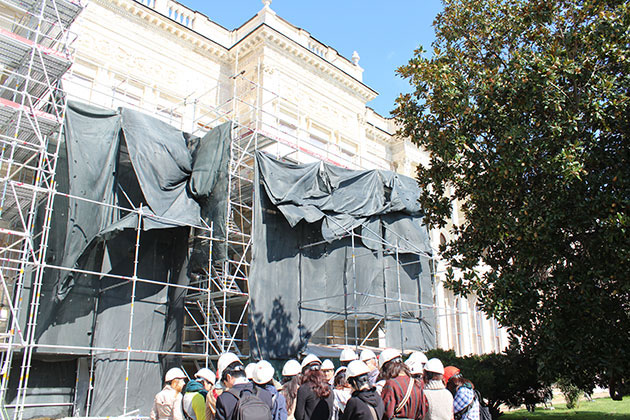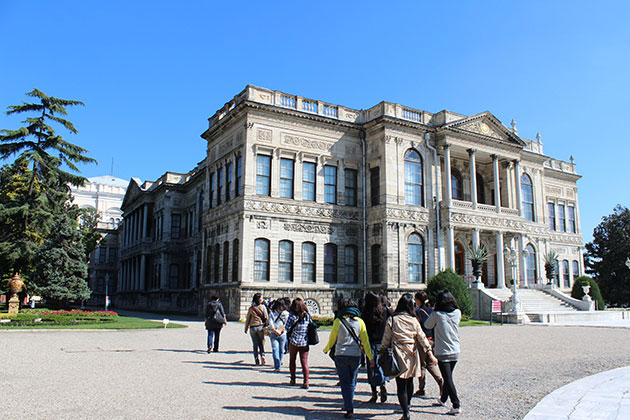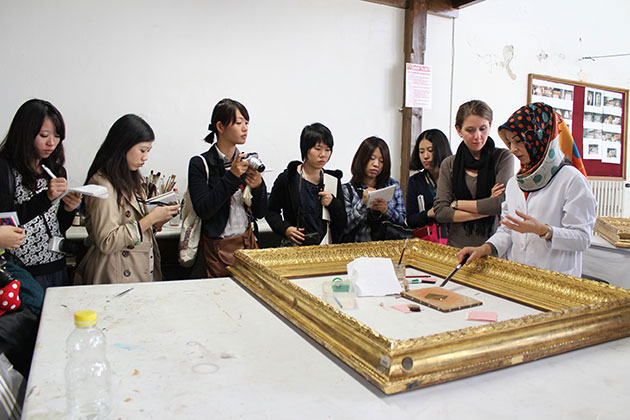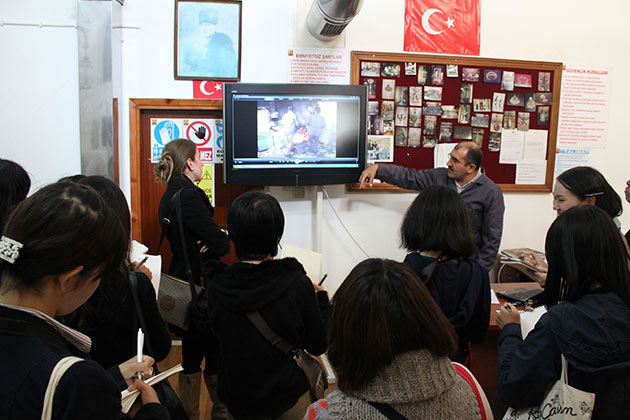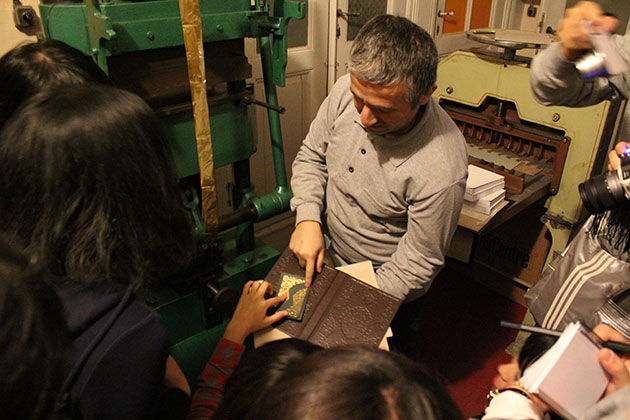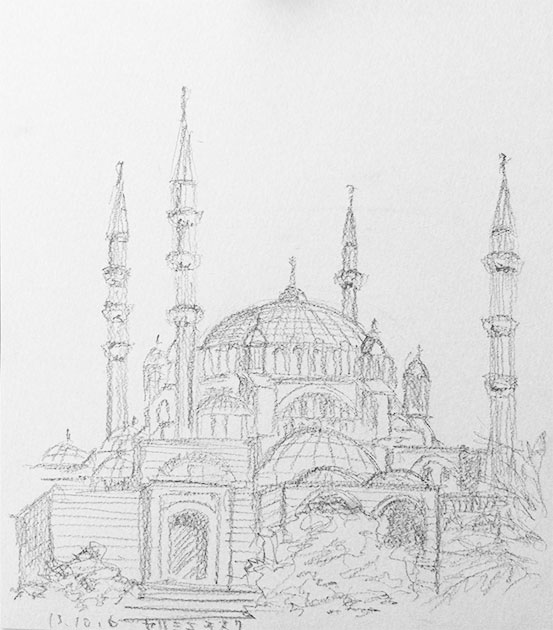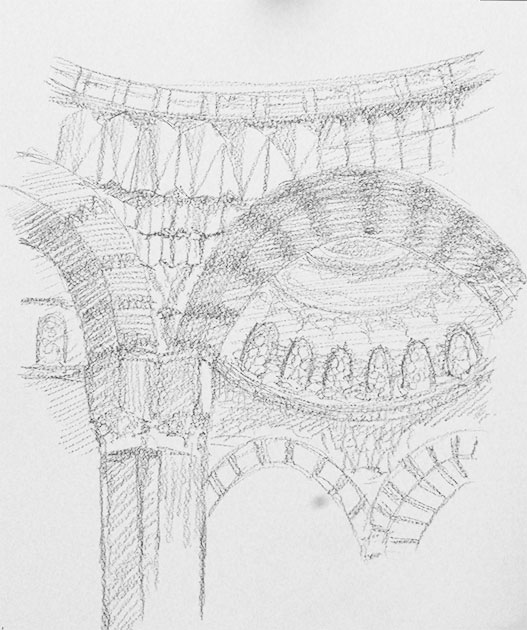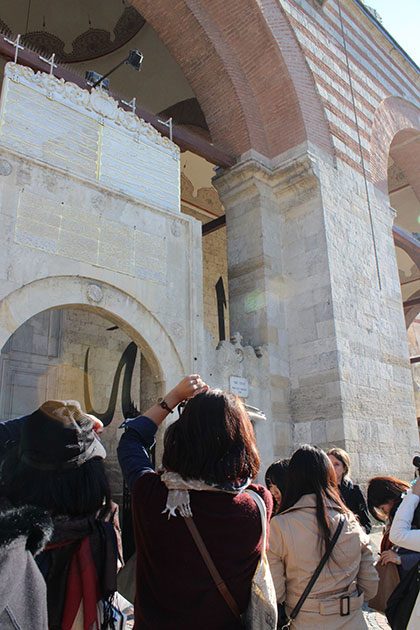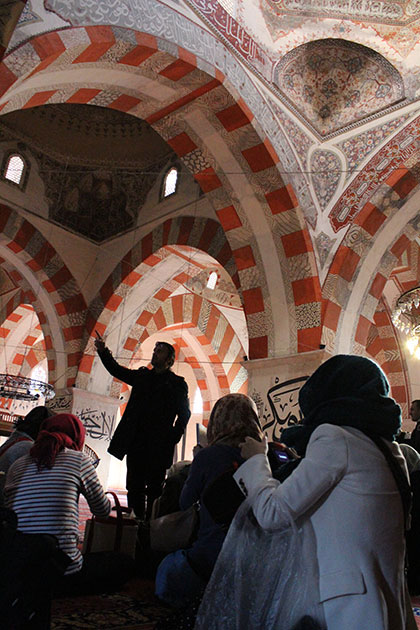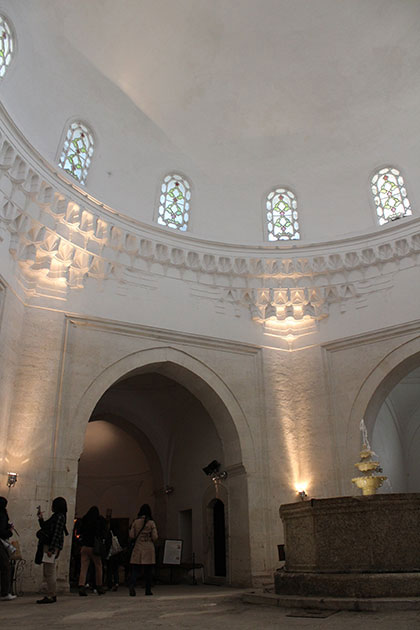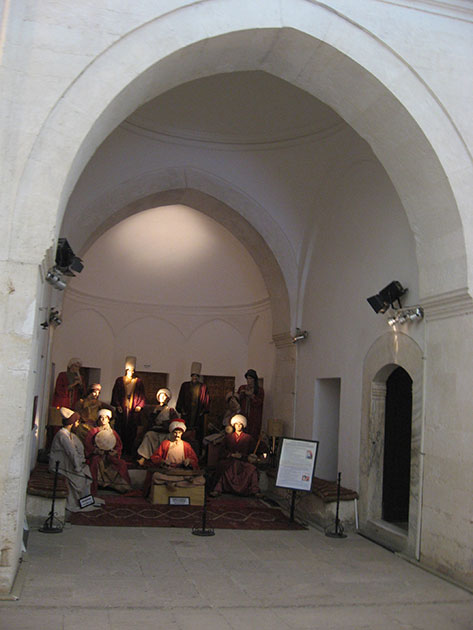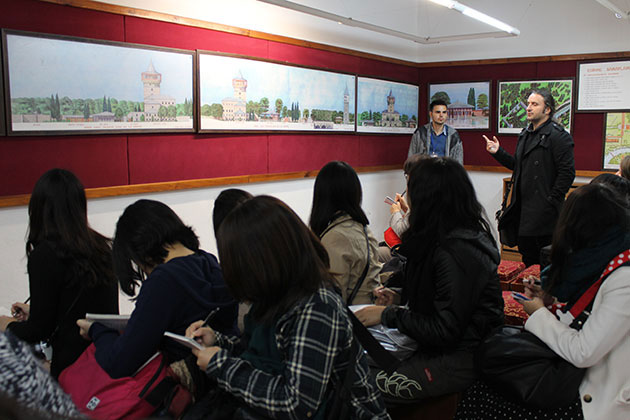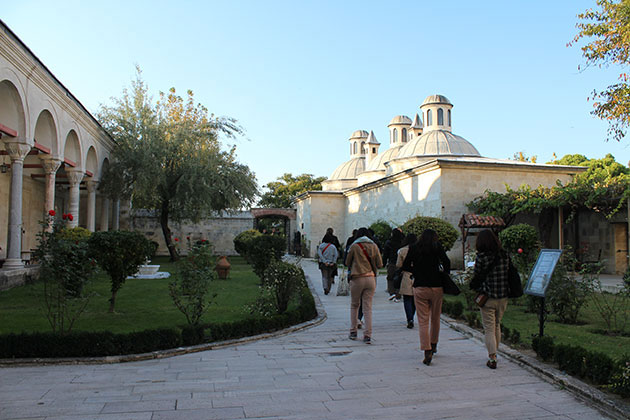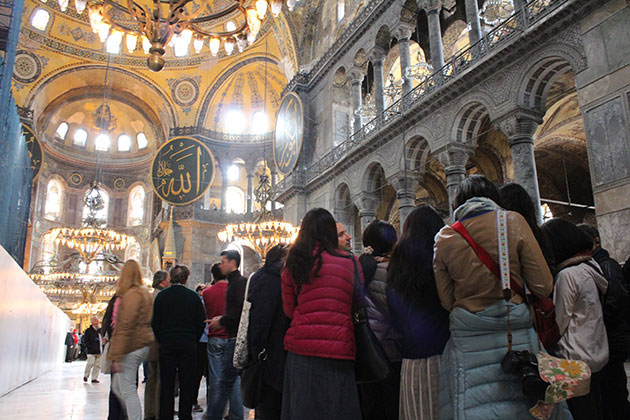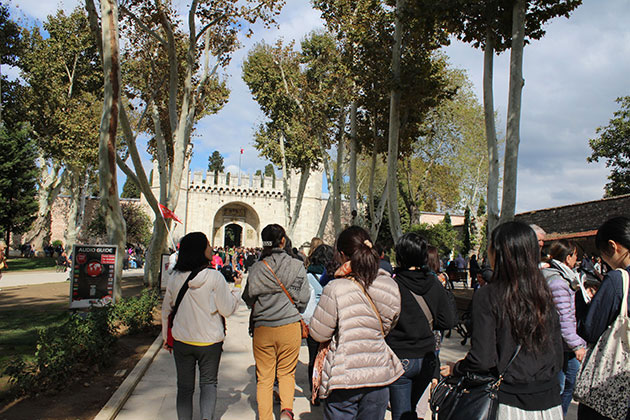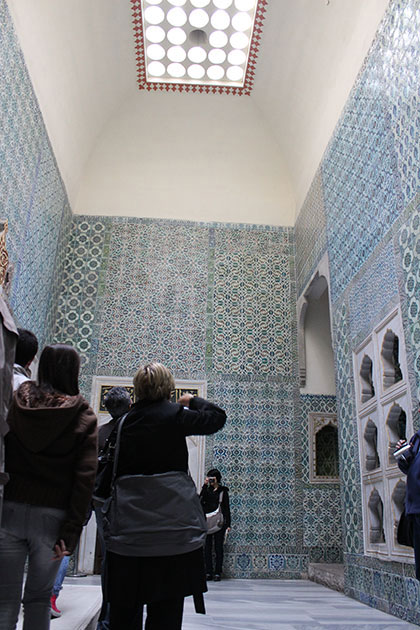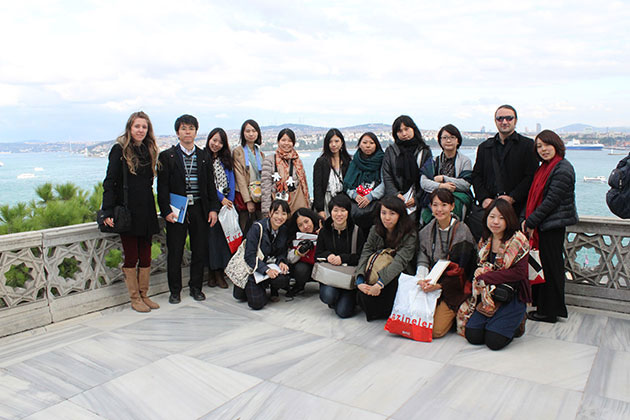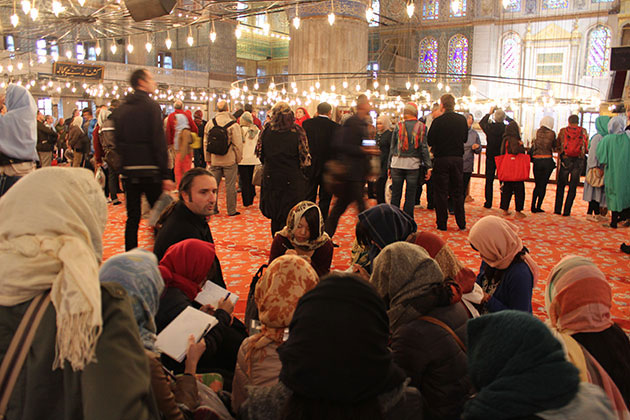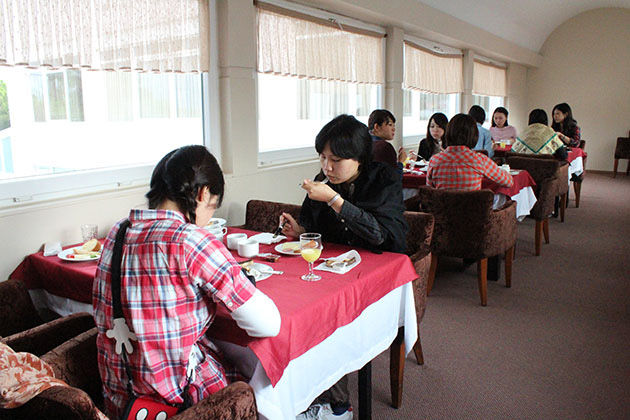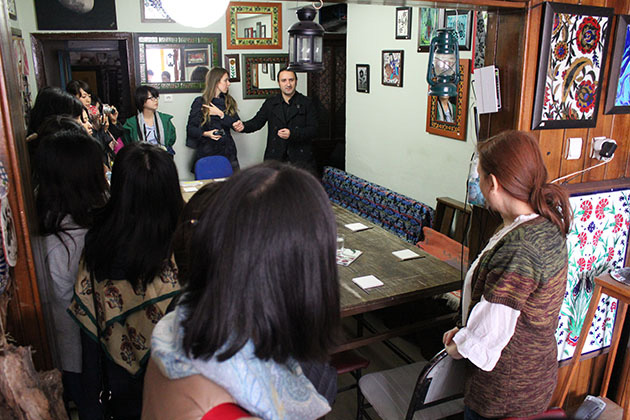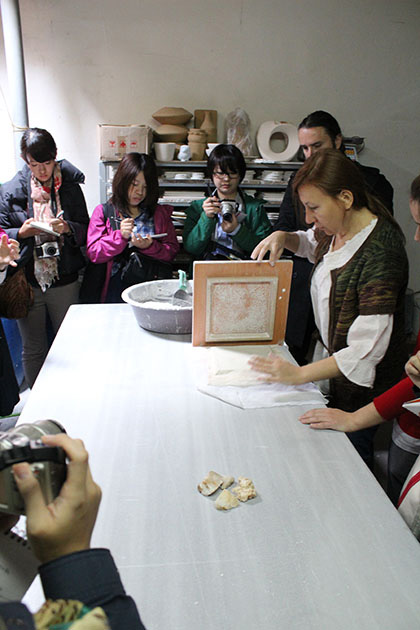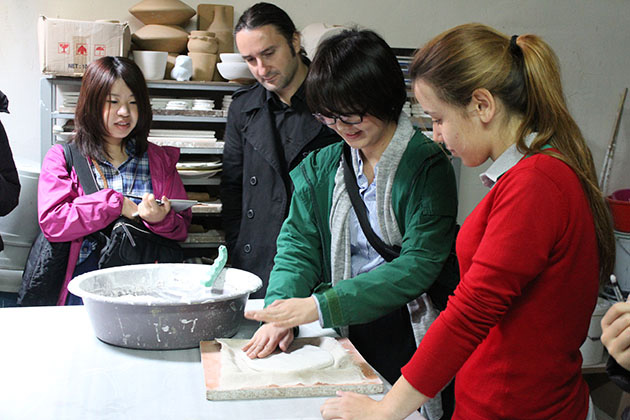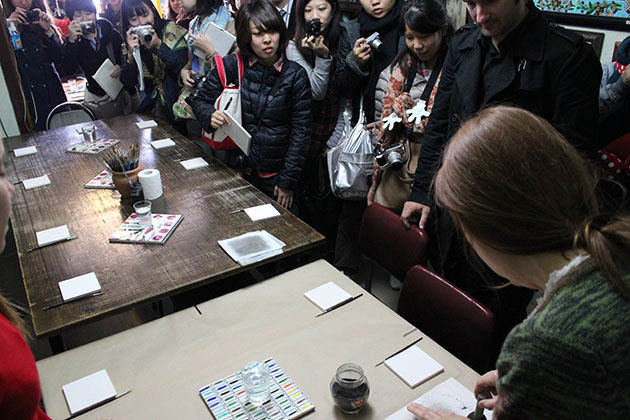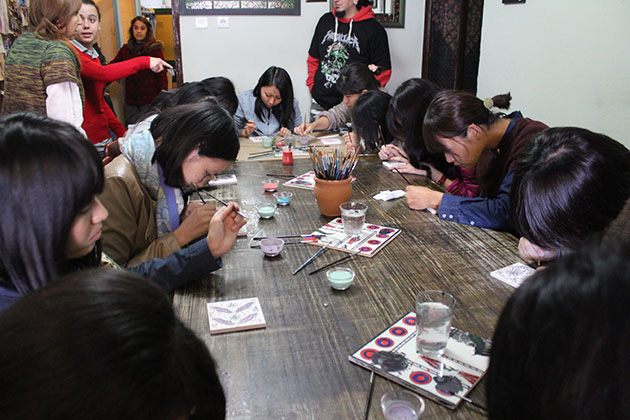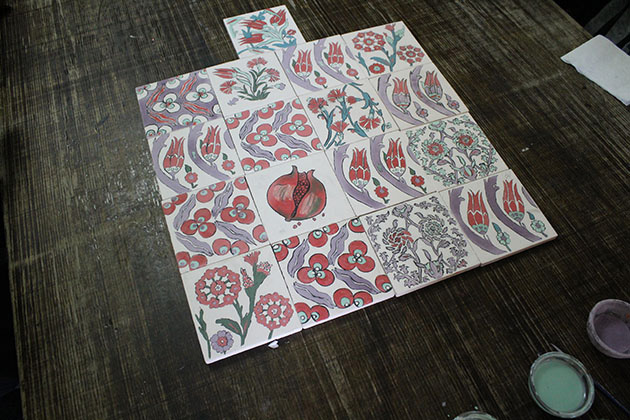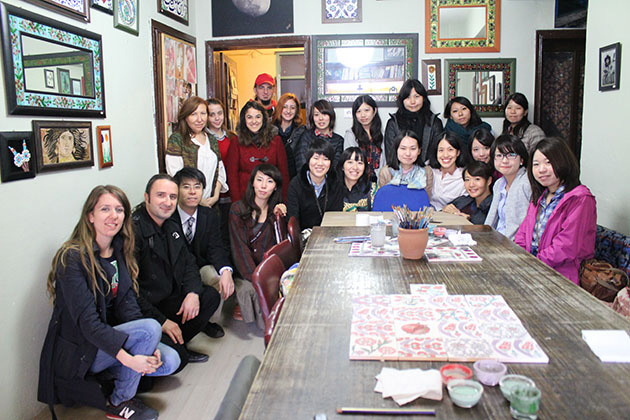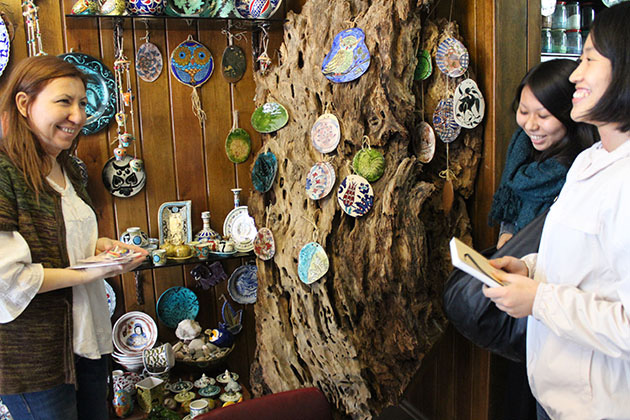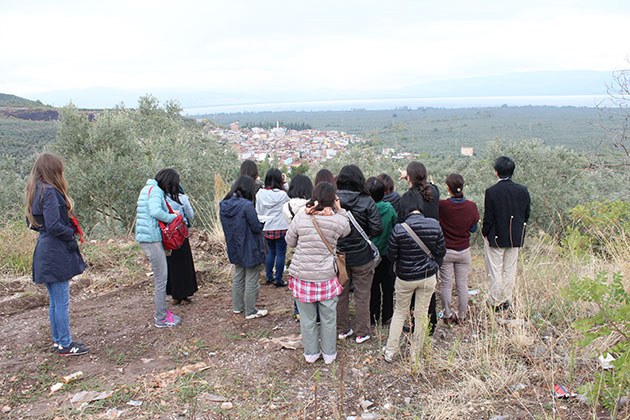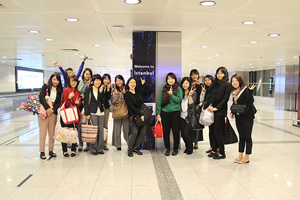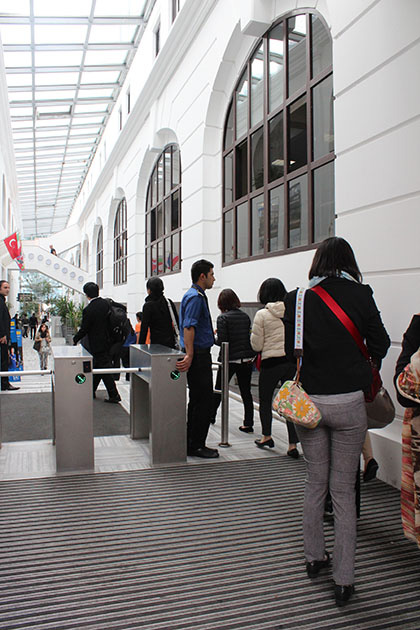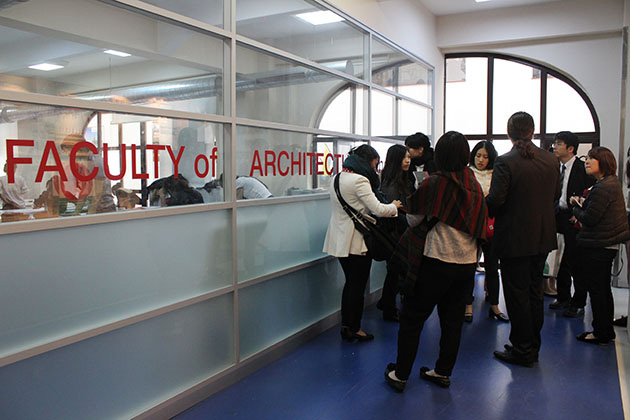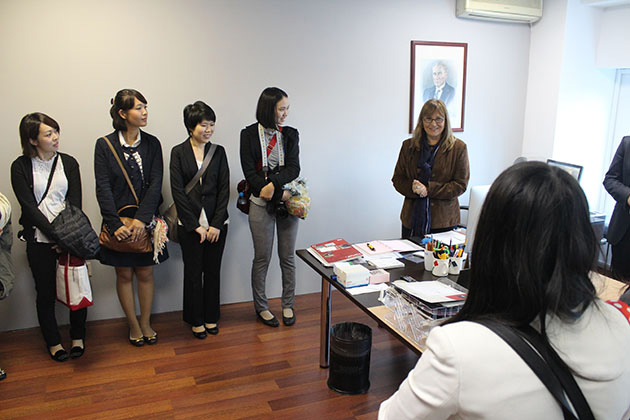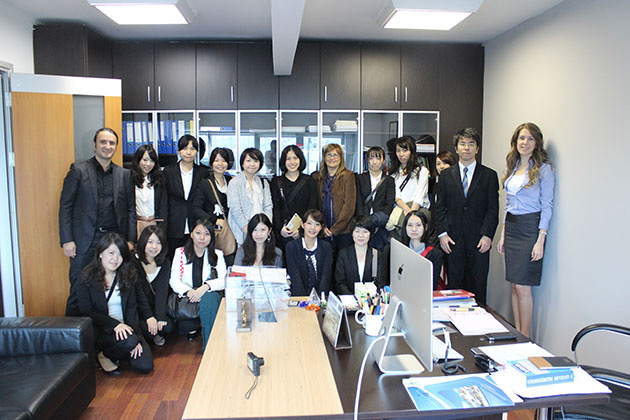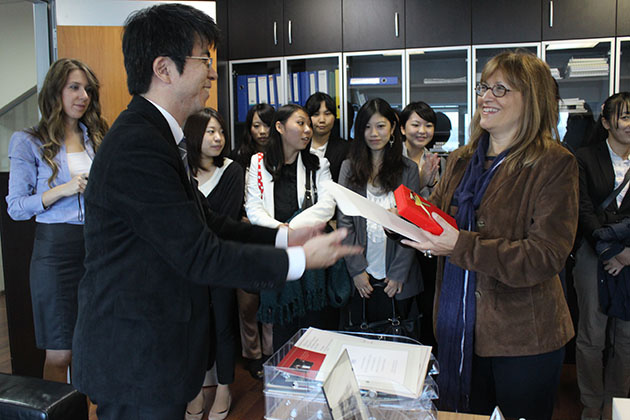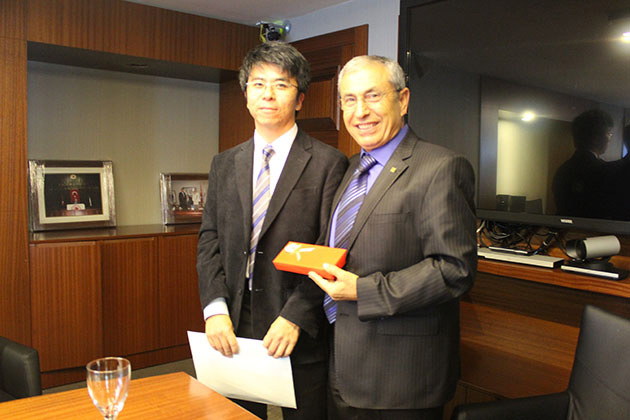 |
| @International Exchange with Bahcesehir University in Turkey@@ |
|
Architecture Major (Master's Program)@
Inter Cultural Studies of Architecture (ICSA) in Istanbul
2013
Tuesday, October 1~Thursday, October 17
|
|
@On April 26, 2013, the Architecture Major (Masterfs Program) and the Department of Architecture of MWU was certified by JABEE as an authorized Architectural Education Program for the first time in Japan. As a result our 6-year Masterfs Program of Architecture Major, Department of Architecture was formally certificated as a program that corresponds to the international standard for education, UNESCO-UIA Charter for Architectural Education. Our program aims to nurture perceptive architects with insights into the life and culture both of their own society and of the world, thus able to work internationally.
@@As part of such education, we started overseas practical training program in FY2010 under the general exchange agreement signed in December 2008 between Bahcesehir University (BAU), Turkey, and MWU. Graduate school students (architecture major, in the Masterfs program) led by faculty members visited BAU for two weeks to experience conservation-related practical training as coursework. This year a similar course was given to fourteen master program students in the first grade from October 1(Tue) to 17(Thu), 2013 as part of the curriculum eBuilding Preservation Restoration Internship Coursef and ePractice in Architectural Design If.
|
| >>2012@@>>2011@@>>2010 |
Schedule |
Tuesday, October 1 |
|
Departure from Kansai International Airport |
Wednesday, October 2 |
|
Arrival at Istanbul Ataturk Airport
|
|
|
Visit to Bahcesehir University |
Thursday, October 3 |
|
Visit to Bursa |
Friday, October 4 |
|
Iznik tile manufacturing experience and visit to the historic wooden house
|
Saturday, October 5 |
|
Istanbul: Visit to Ayasofya, Topcapi Palace and Sultanahmet Camii
|
Sunday, October 6 |
|
Visit to Edirne |
Monday, October 7 |
|
Practical training of restoration work at Dolmabahce Palace |
Tuesday, October 8 |
|
Practical training of restoration work at Yildiz Palace and visit to Dolmabahce Palace
@ |
Wednesday, October 9 |
|
Practical training of restoration work at KUDEB |
| Thursday, October 10 |
|
Istanbul: Visit to Uskudar and Besiktas |
| Friday, October 11 |
|
Cultural property conservation training in Uskudar
|
Saturday, October 12 |
|
Visit to a large-scaled wooden structure in Buyukada |
| Sunday, October 13 |
|
Istanbul: Visit to Eyup, Eminonu and Galata
|
| Monday, October 14 |
|
Istanbul: Visit to Chora Church, Grand Bazaar etc. |
| Tuesday, October 15 |
|
Istanbul: Visit to Rumelihisari and other places |
| Wednesday, October 16 |
|
Istanbul: Visit to Istanbul Archaeological Museums and other places |
|
|
Departure from Istanbul Ataturk Airport for Japan |
Thursday, October 17 |
|
Arrival at Kansai International Airport |
|
|
|
October 16, 2013
Istanbul: Visit to Istanbul Archaeological Museums and other places |
|
| |
|
|
|
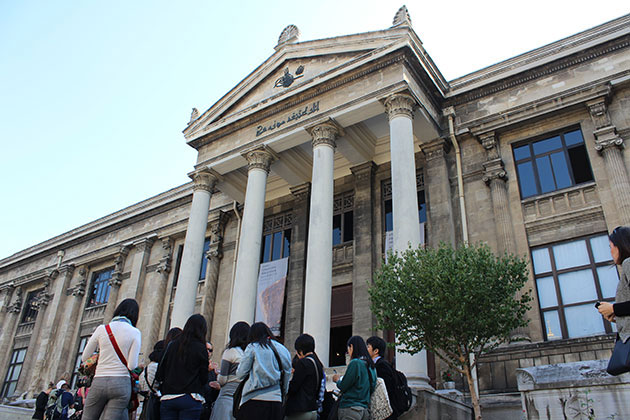 |
| Visit to Archaeological Museum |
|
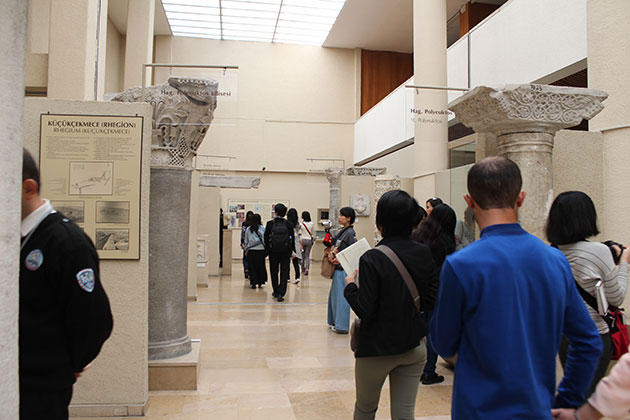 |
| You can observe exhibits from precious collection related to Turkey commencing with the articles of Greek and Roman periods. |
|
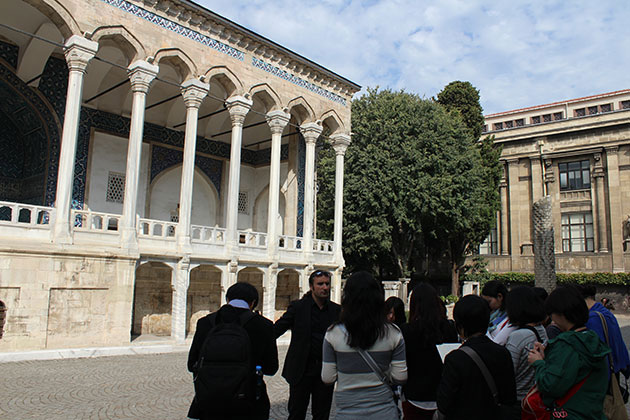 |
| Visit to Tiled Kiosk Museum located in the same compound as Archaeological Museum. |
|
 |
| Visit to Tiled Kiosk Museum: the building was once sultanfs summer house. |
| |
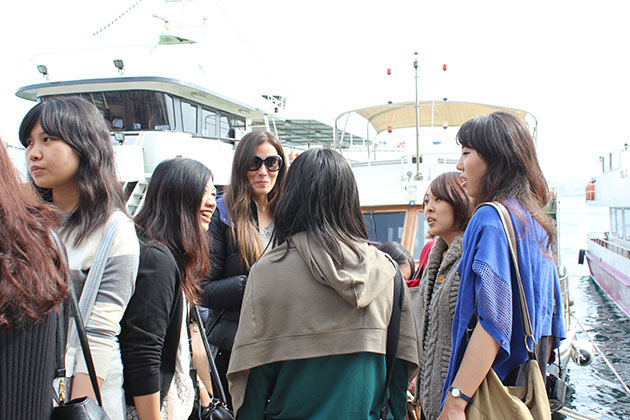 |
| Students as chatting with a Turkish student |
| |
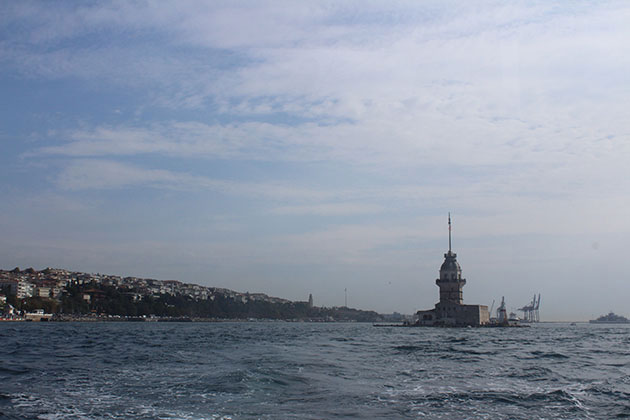 |
| To Kiz Kulesi (The Maidenfs Tower), a fortress at the mouse of Bosphorus Strait, by ferry |
| |
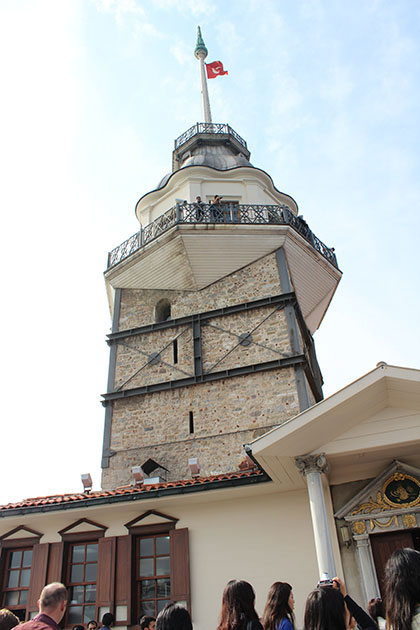 |
| Kiz Kulesi (The Maiden's Tower): the building was refurbished in 1999. We had lunch at this restaurant. |
| |
 |
| Old city as viewed from Kiz Kulesi |
| |
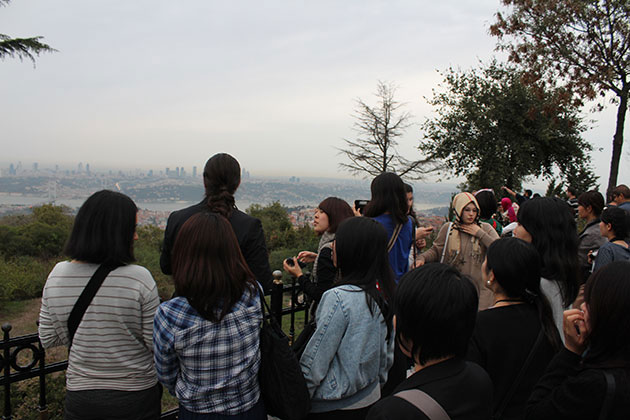 |
| Visit to Camlica Hill, the highest point in Istanbul. You can view not only new city and old city but also Buyukada on Marmara Sea. |
| |
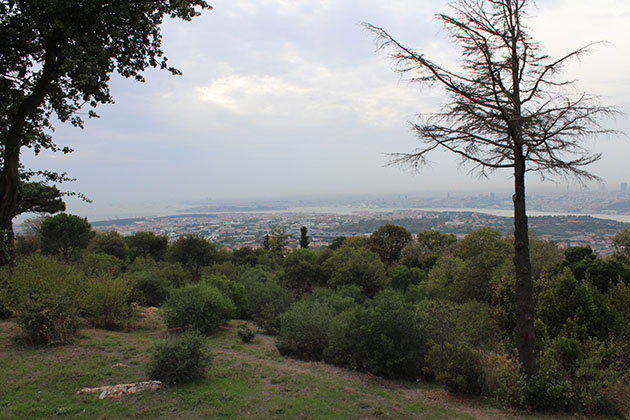 |
| View of Istanbul as seen from Camlica Hill. |
| |
Today, we continued the tour of Istanbul. In the morning, we went to Istanbul Archaeological Museums, and visited Archeological Museum, which exhibits important collection of Turkish relics commencing with that of the Greek and Roman periods. We also visited Tiled Kiosk Museum converted from once sultanfs summer house to see the splendid tiles. In the afternoon, we took a ferry to cross the Bosphorus to go to the fortress, Kiz Kulesi(The Maidenfs Tower) at the mouth of the strait to have lunch at a restaurant refurbished in 1999. In the evening, we climbed Camlica Hill to the highest point in Istanbul where we could see the vast view of the city of Istanbul and the sea and islands below. Then we moved to Istanbul Ataturk International Airport to leave for home. It has been a fulfilling study tour to get a glimpse of the profound Turkish history and culture. |
|
|
|
October 15, 2013
Istanbul: Visit to Rumelihisari and other places |
|
| |
|
|
|
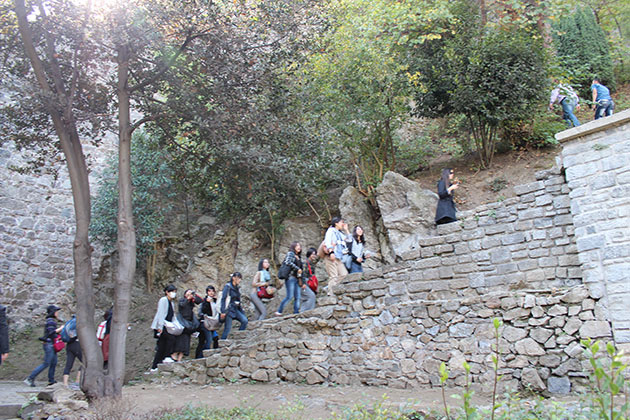 |
| Visit to Rumelihisari |
|
 |
| Distant view of Anadoluhisari situated on the opposite shore of the Bosphorus Strait |
|
 |
| We went further up the flight of stone steps |
|
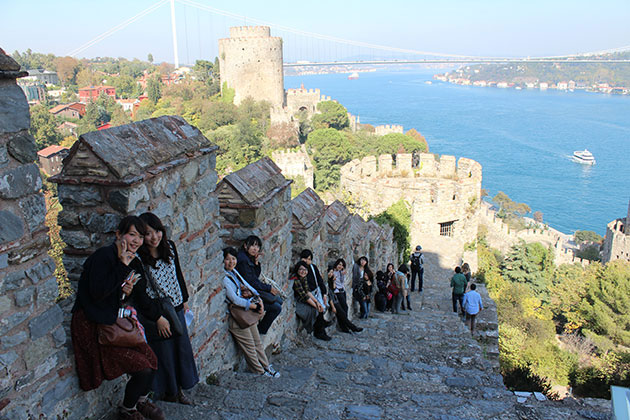 |
| Commemorative photograph at the top: a magnificent view of the Bosphorus Strait is seen below |
| |
 |
| Visit to a modern architecture, Zorlu Center |
| |
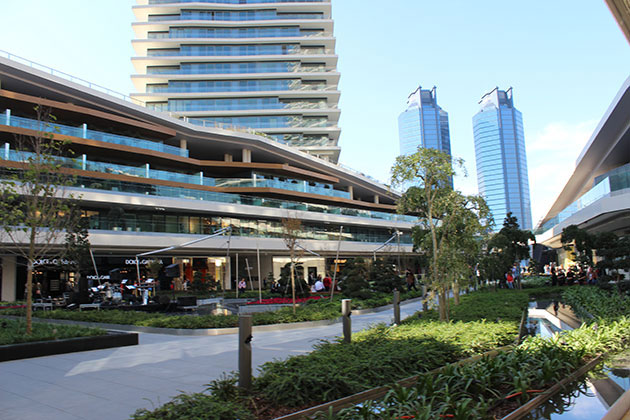 |
| Visit to a modern architecture, Zorlu Center |
| |
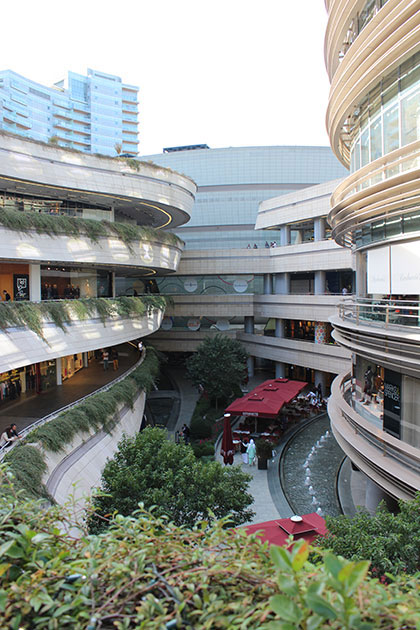 |
| Visit to a modern architecture, Kanyon Shopping Mall |
| |
 |
| Visit to a modern architecture, Kanyon Shopping Mall |
| |
 |
| Visit to Ertugrul Tekke Camii: unlike the Camii we have seen so far, it is a palace-like appearance. It was completed in 1888. The Camii has a function of an assembly hall. Hence the palace-like structure. |
| |
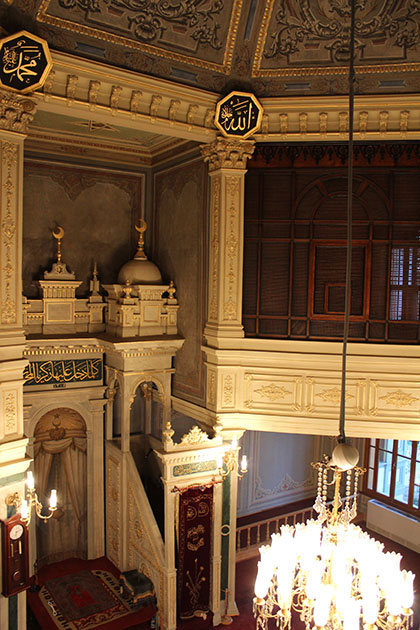 |
| Interior of Ertugrul Tekke Camii |
| |
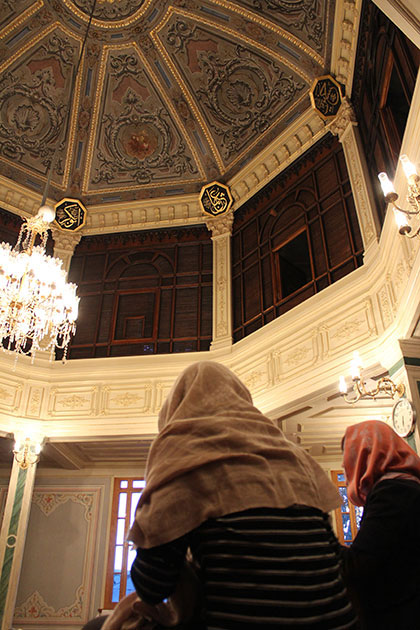 |
| Students as sketching Ertugrul Tekke Camii |
| |
Today, we continued the tour in Istanbul. To begin with we visited Rumelihisari, a fortress which is said to have been constructed in four months in 1453 prior to the battle against the Constantinople force. At present, concerts are held occasionally. We went up flight of stone steps to see a spectacular view of the Bosphorus Strait. Then we observed modern Turkish architecture, Zorlu Center, a complex facility which has been just completed last week. We also visited Kanyon Shopping Mall designed with an image of canyon in mind. We returned to Besiktas to complete the dayfs tour to see and make sketches of Ertugrul Tekke Camii, a palace-like Camii completed in 1888. |
|
|
|
October 14, 2013
Istanbul: Visit to Chora Church, Grand Bazaar etc. |
|
| |
|
|
|
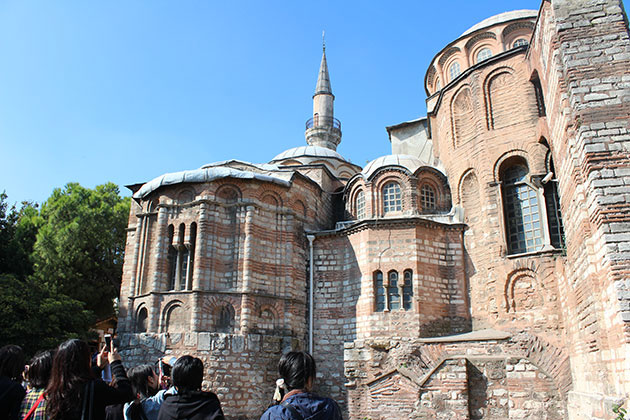 |
| Visit to Chora Church |
|
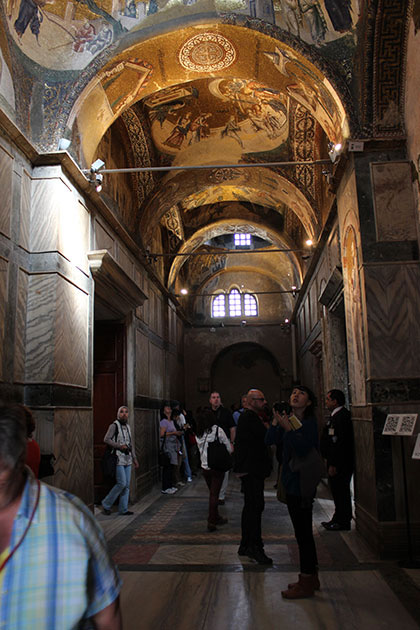 |
| Interior of Chora Church |
|
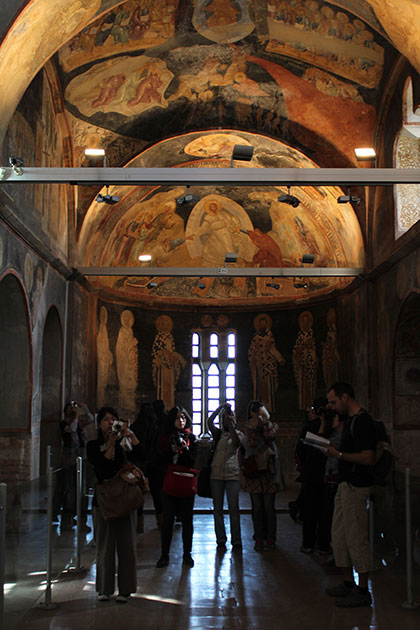 |
| Interior of Chora Church |
|
 |
| Students as observing a fortress called Yedikule (seven towers) located to the south of Theodosian Walls. |
| |
 |
| Students as going up the flight of stairs of Yedikule. |
| |
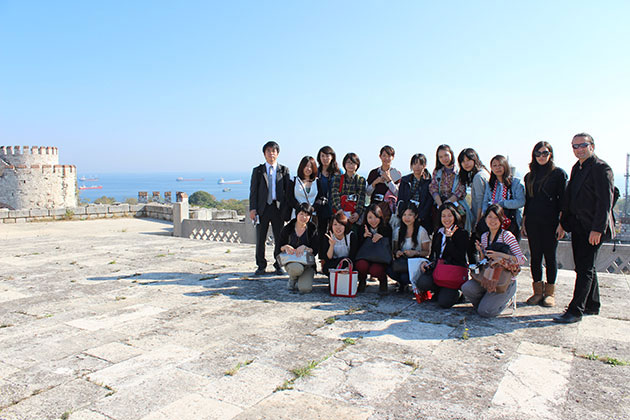 |
| Commemorative picture on the fortress against the backdrop of vast view of the Sea of Marmara |
| |
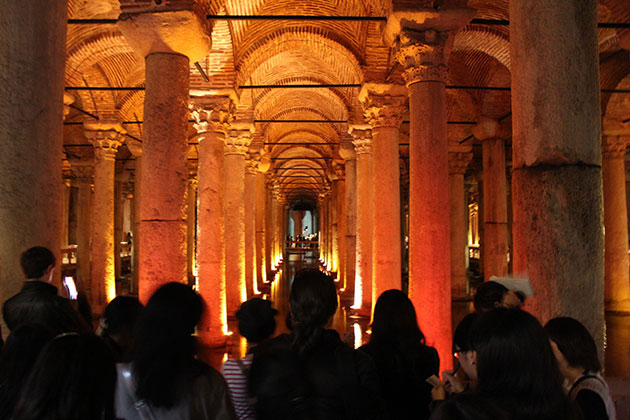 |
| Visit to Basilica Cistern |
| |
 |
| Students as sketching Ayasofya in the square at Sultanahmet |
| |
 |
| A sketch of Ayasofya by a student |
| |
 |
| Visit to Grand Bazaar |
| |
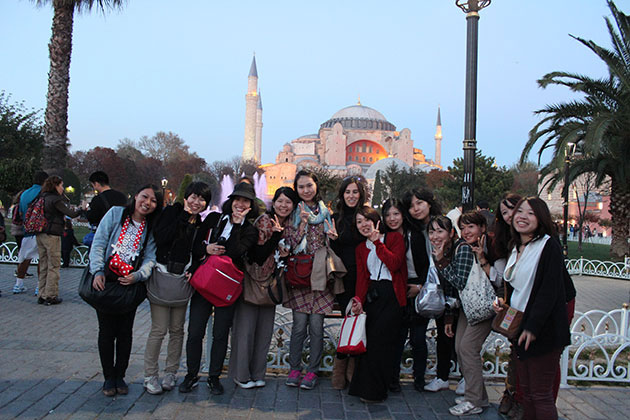 |
| Commemorative picture with Turkish students who have participated in eICSA in JAPAN 2013f |
| |
Today, we mainly observed the remains of Byzantine Empire in Istanbul, such as Chora Church known for its masterpiece Byzantine art i.e. mosaic and fresco paintings, the fortress called Yedikule (literally, seven towers) located to the south of the Theodosian Walls, Basilica Cistern, which is the underground reservoir of Roman Empire, and Grand Bazaar with 4,000 outlets crowding together. We sketched Ayasofya and Sultanahmet Camii in the square at Sultanahmet. Turkish students who had participated in eICSA in JAPAN 2013f joined us and we exchanged each other. |
|
|
|
October 13, 2013
Istanbul: Visit to Eyup, Eminonu and Galata |
|
| |
|
|
|
 |
| Sight of Topcapi Palace and Ayasofya (Hagia Sophia) viewed from Karakoy (Galata) district: we took a ferry for Eyup situated deep in the Golden Horn. |
|
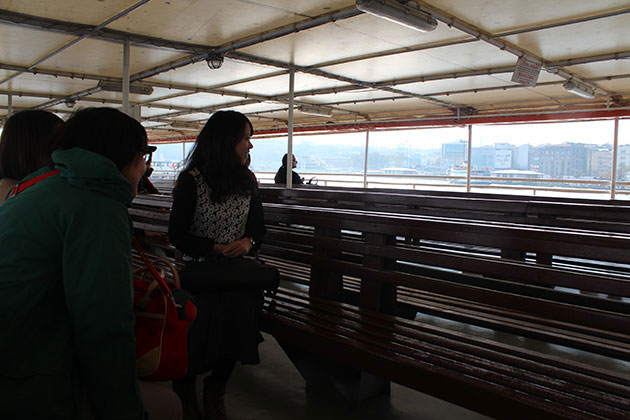 |
| On board the ferry for Eyup: town of Istanbul is seen across the sea of Golden Horn. |
|
 |
| Visit to the Islamic sacred ground Eyup Sultan Camii. |
|
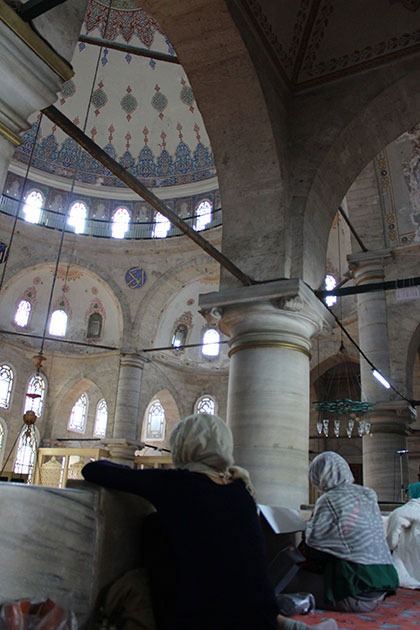 |
| Students as making sketches of Eyup Sultan Camii |
| |
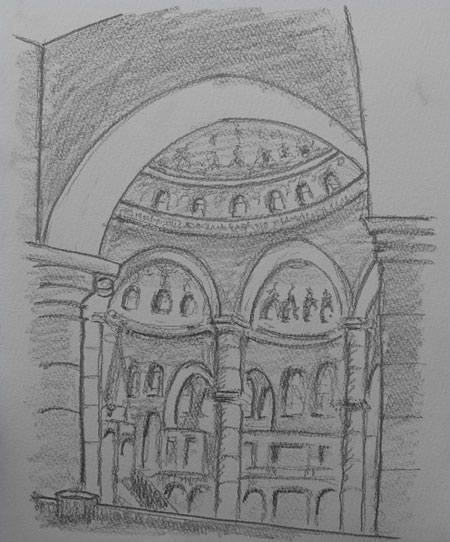 |
| A sketch of Eyup Sultan Camii by a student |
| |
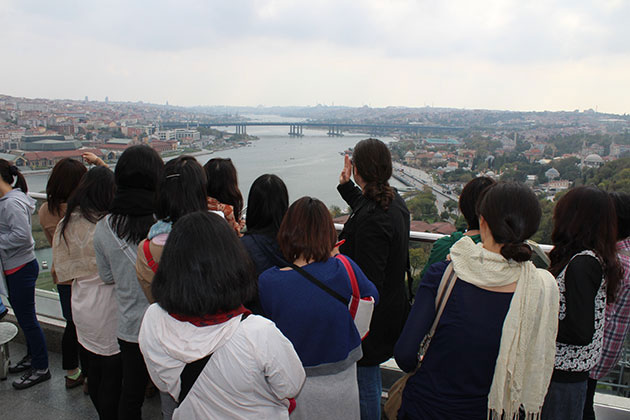 |
| Istanbul viewed from the observation deck at Pierre Loti |
| |
 |
| Lunch at Pierre Loti |
| |
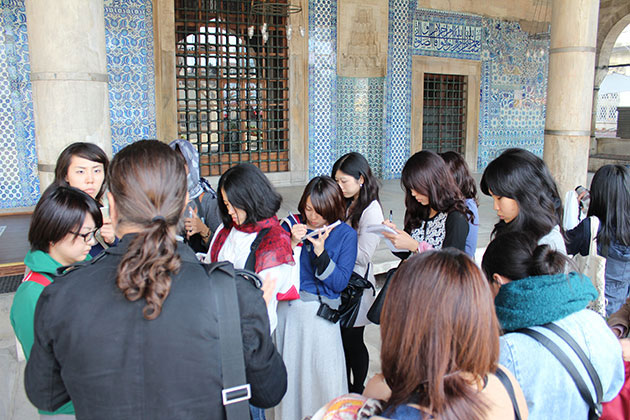 |
| Rustempasa Camii |
| |
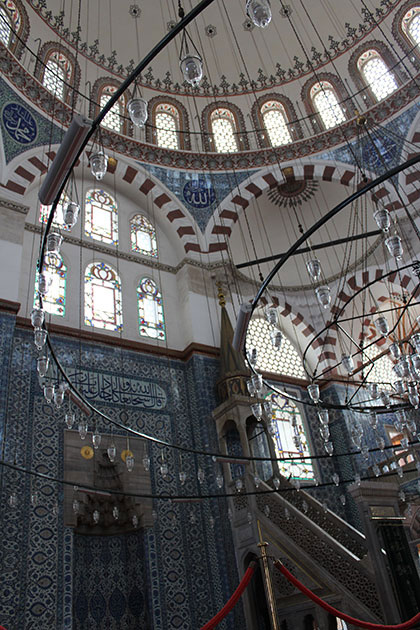 |
| Interior of Rustempasa Camii: look at the exquisite Izunik tiles! |
| |
 |
| Yeni Camii |
| |
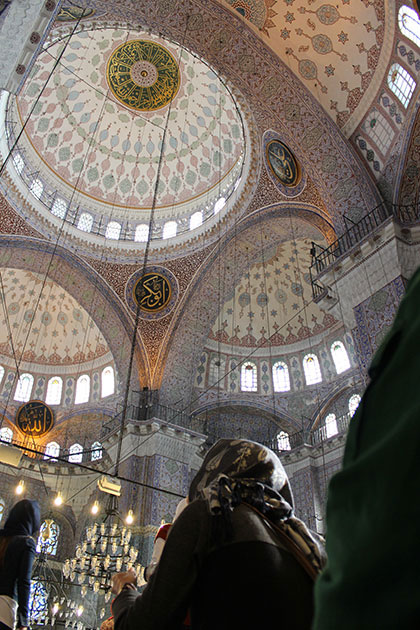 |
| Interior of Yeni Camii |
| |
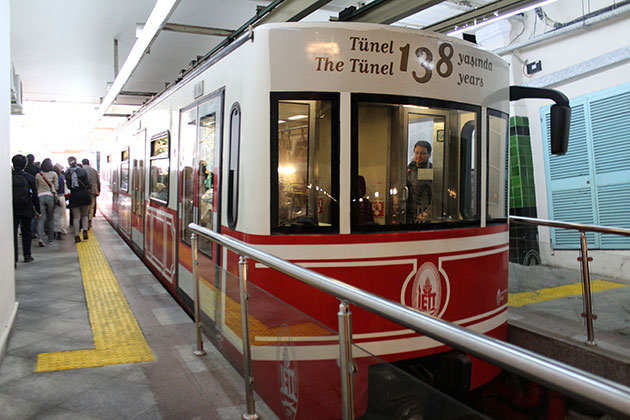 |
We took the Tunel, a short 573m-long subway, on the way to Galata Tower |
| |
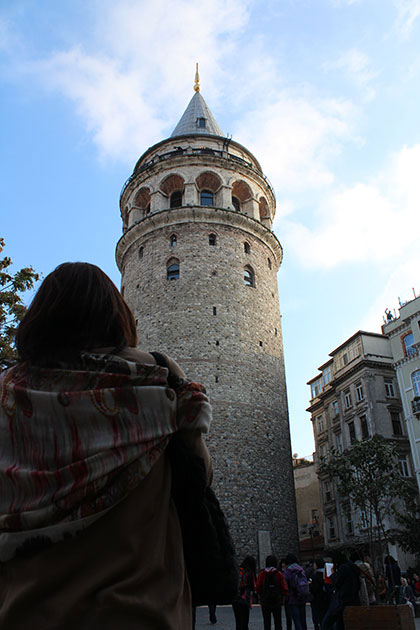 |
| Students as making sketches of Galata Tower |
| |
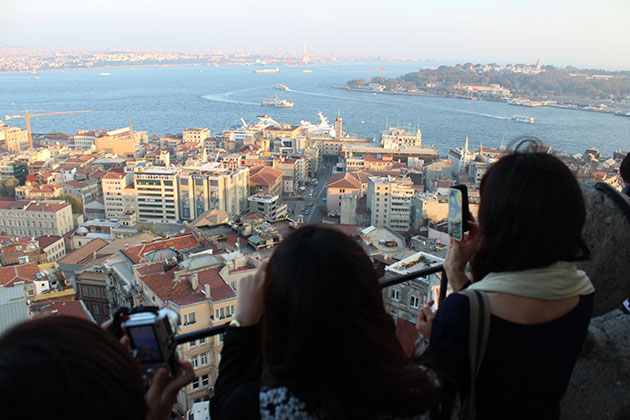 |
| Istanbul as seen atop the Galata Tower |
| |
 |
| The sight of setting sun viewed from Galata Tower |
| |
 |
| Observing Istiklal Avenue, one of the Istanbulfs downtowns |
| |
Today we visited Eyup, Eminonu and Galata in Istanbul. In Eyup, we first visited Eyup Sultan Camii, the sacred ground of Muslim and made sketches of it. Then we took the ropeway to go to Pierre Loti, a noted viewing point of the glorious view of Golden Horn. In Eminonu, we visited Rustempasa Camii adorned with beautiful Izunik tiles and Yeni Camii at the foot of Galata Bridge. On the way from Yeni Camii to Galata Tower we took a ride on the Tunel (etunnelfin English), a short subway line which runs 573 mfs distance. After making sketches of Galata Tower we climbed atop and fully enjoyed 360view of Istanbul. Finally, we visited one of Istanbulfs downtown, Istiklal Avenue. It has been a day we could see various aspects of Istanbul. |
|
|
|
|
|
|
|
October 10, 2013
Istanbul: Visit to Uskudar and Besiktas |
|
| |
|
|
|
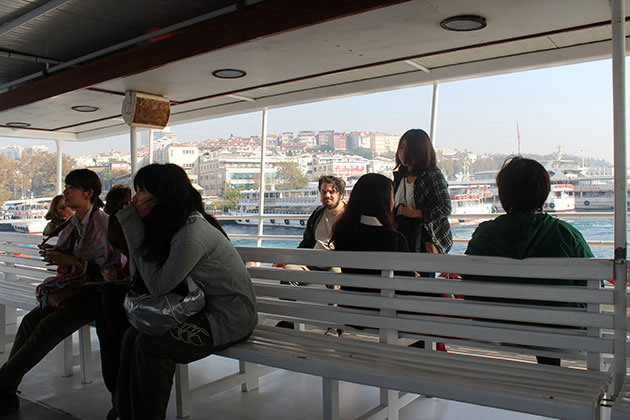 |
| On board the ferry heading for the Asian side, Uskudar |
|
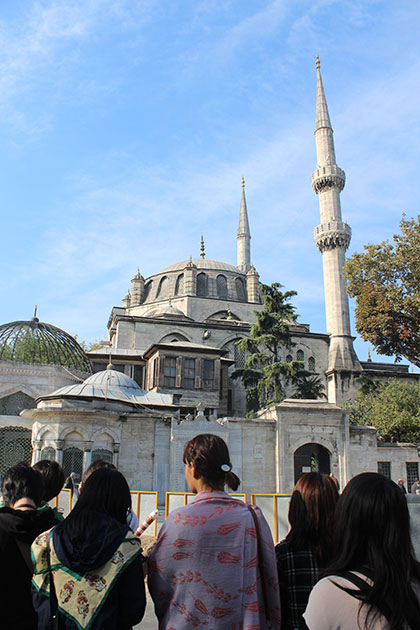 |
| Visit to Yeni Valide Camii, Uskudar |
|
 |
| Students as sketching Yeni Valide Camii, Uskudar |
|
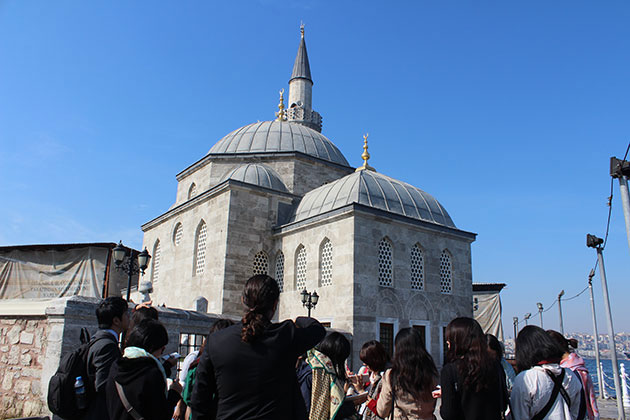 |
| Semsi Pasa Camii in Uskudar, one of the Mimar Sinanfs works |
| |
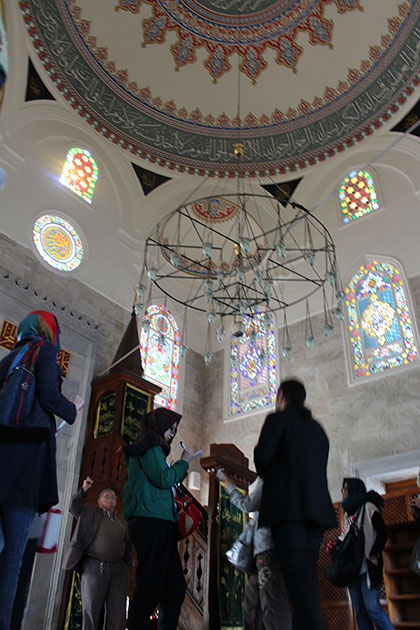 |
| Semsi Pasa Camii in Uskudar |
| |
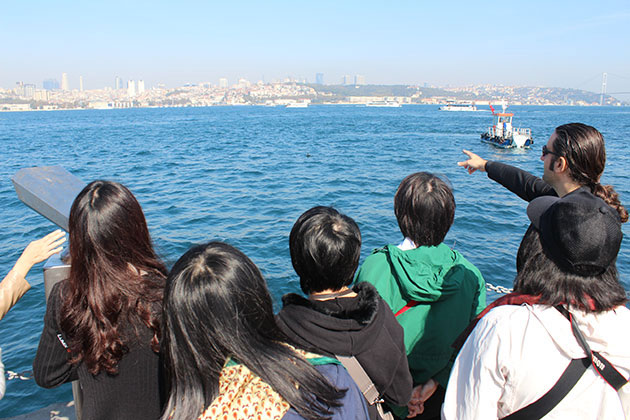 |
| A sight of new district across Bosphorus viewed from Uskudar: high-rise buildings mostly built in the last decade spoil the scenery. |
| |
 |
| Palace Collections Museum in Dolmabahce Palace |
| |
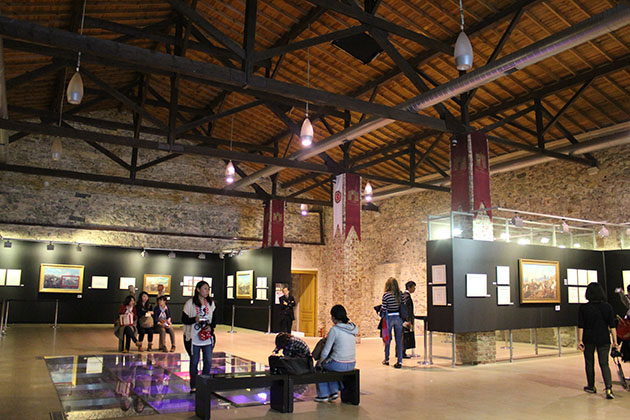 |
Palace Collections Museum in Dolmabahce Palace: one-time palacefs kitchen was converted into the exhibition hall
|
| |
 |
| Remains of furnaces in the original condition are seen underfoot through the glazed floor
|
| |
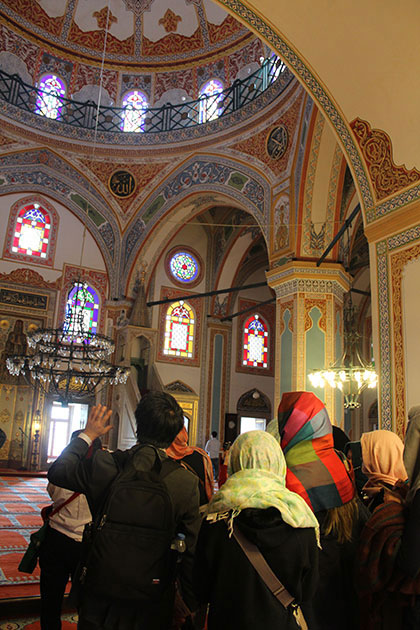 |
| Visit to Sinan Pasa Camii in Besiktas |
| |
 |
| A sketch of Sinan Pasa Camii by a student |
| |
 |
| A sketch of Sinan Pasa Camii by a student |
| |
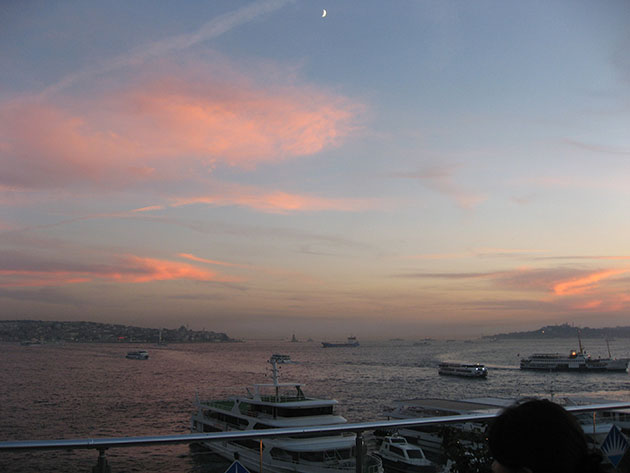 |
| We sketched the evening scene of the Bosphorus Strait. |
| |
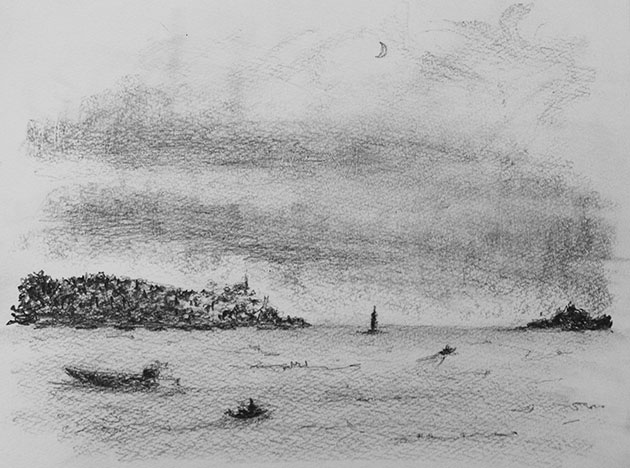 |
| A sketch of the Bosphorus Strait by a student |
| |
Today we visited Uskudar and Besiktas in Istanbul to see Camii and other places. In Uskudar on the Asian side we observed Yeni Valide Camii (literally, new motherfs Camii) built for a sultanfs mother and Semsi Pasa Camii, one of the Mimar Sinanfs works. In Besiktas on the European side, we visited Palace Collections Museum, which houses daily living utensils used in the Dolmabahce Palace and Sinan Pasa Camii, another work of Mimar Sinan. In the evening we sketched the Bosphorus against the backdrop of the setting sun on the rooftop of the Bahcesehir University. |
|
|
|
October 9, 2013
Practical training of restoration work at KUDEB |
|
| |
|
|
|
 |
| Office of a municipal organization of Istanbul, KUDEB, which specializes mainly in the restoration of wooden structure |
|
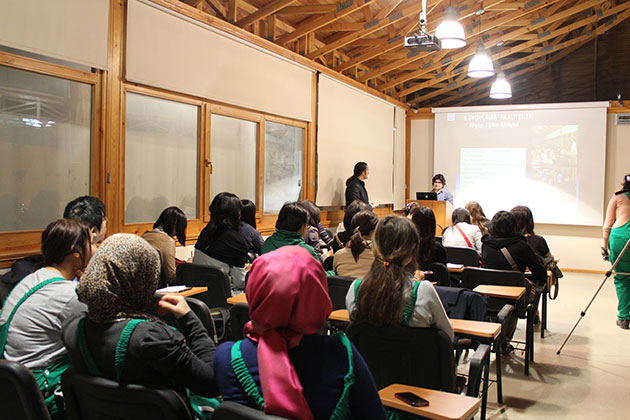 |
| Activities of KUDEB being explained |
|
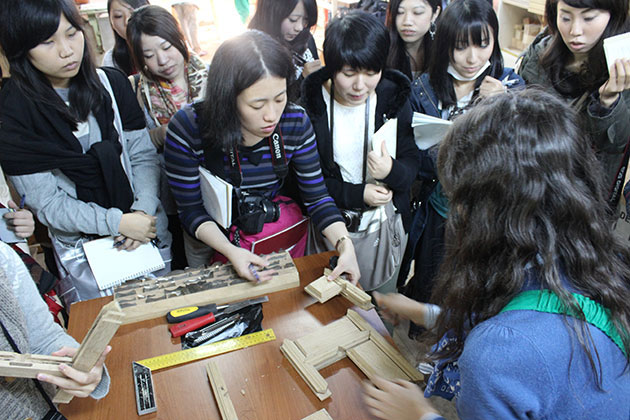 |
| Visit to the bottega at KUDEB: students as fabricating a part of the door (replica) from Suleymaniye Camii |
|
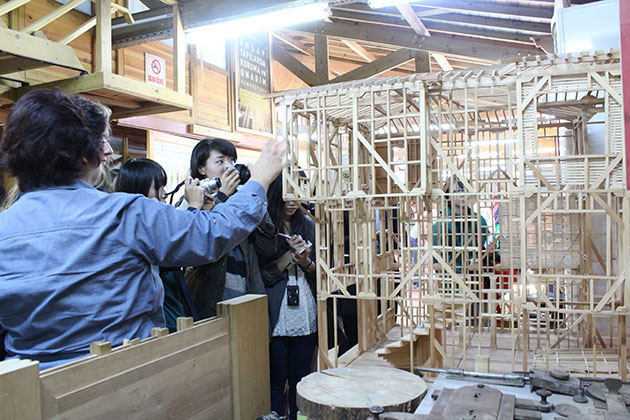 |
| Visit to the bottega at KUDEB: students as listening to an explanation of a framing model of an existing structure which has actually been restored by KUDEB |
| |
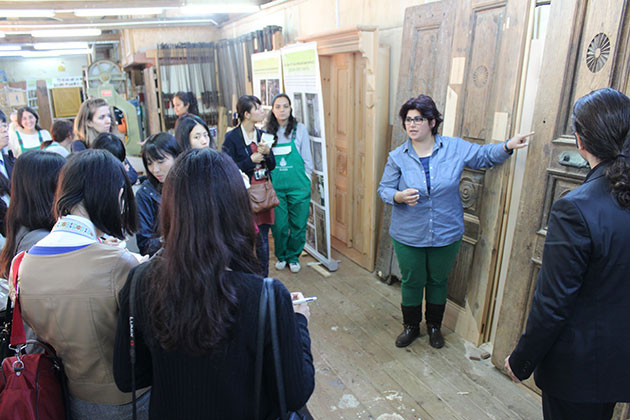 |
| Visit to the bottega at KUDEB: restoration of the door from a 130 years old house once existed in the Zeyrek district being explained |
| |
 |
| The building that houses KUDEB offie was a residence of a naval officer in power back in 1850s. Its restoration is going on while they are using it as their office. (Photo: students at the restoration site.) |
| |
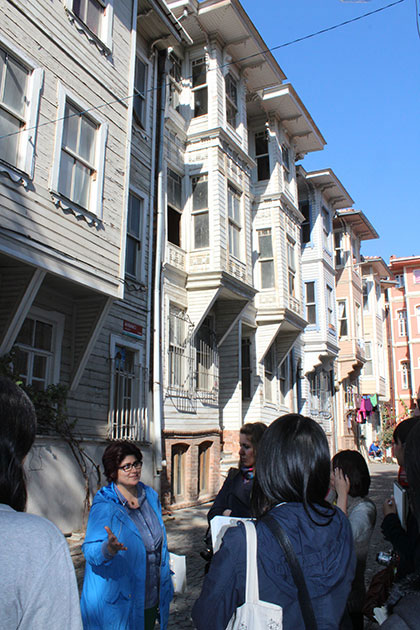 |
| Visit to the wooden house in the Suleymaniye district that KUDEB has restored |
| |
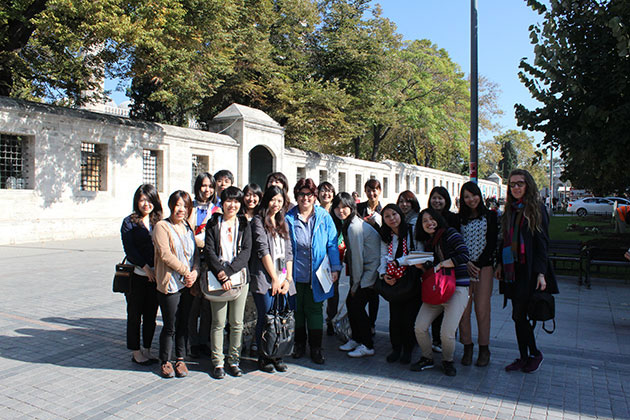 |
| Commemorational photograph with staffs of KUDEB |
| |
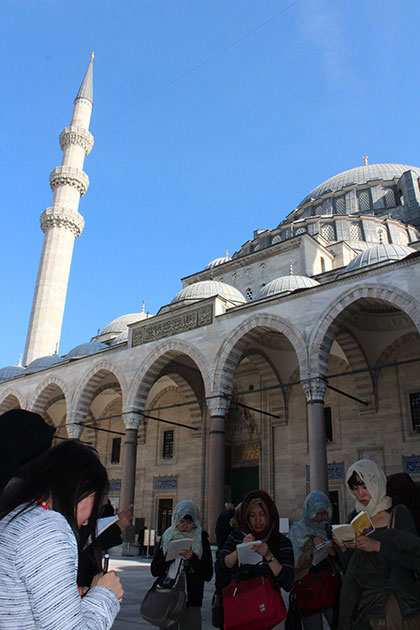 |
| Suleymaniye Camii |
| |
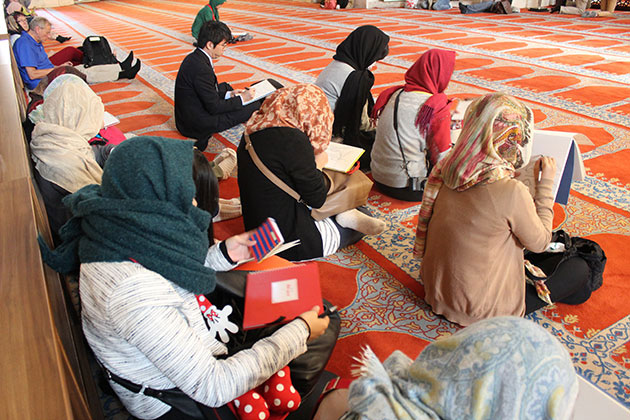 |
| Students as sketching Suleymaniye Camii |
| |
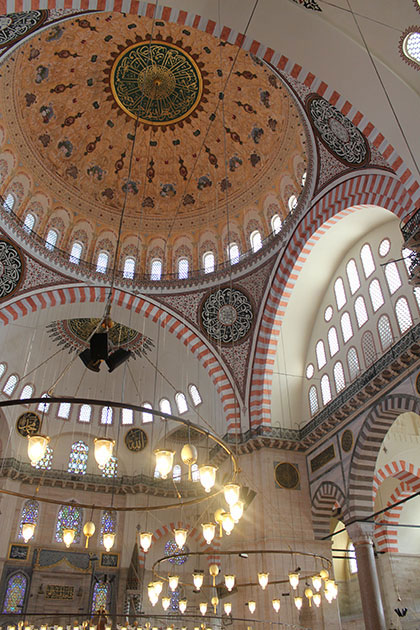 |
| Suleymaniye Camii |
| |
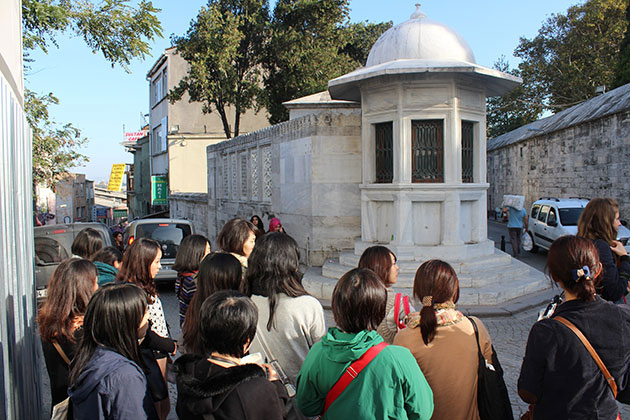 |
| In front of Mimar Sinanfs tomb at the side of Suleymaniye Camii |
| |
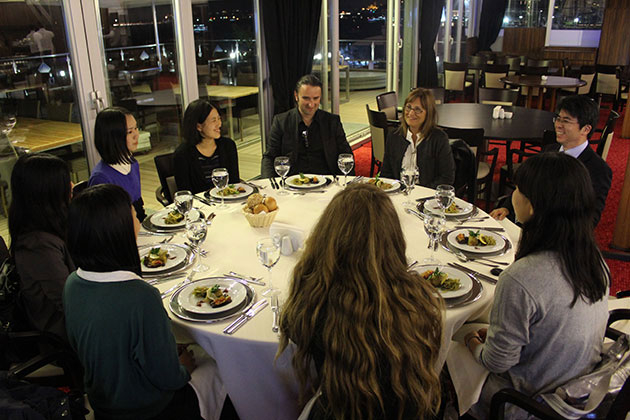 |
| At the restaurant in Bahcesehir University: dinner with Dean Sema of Faculty of Architecture and Design. |
| |
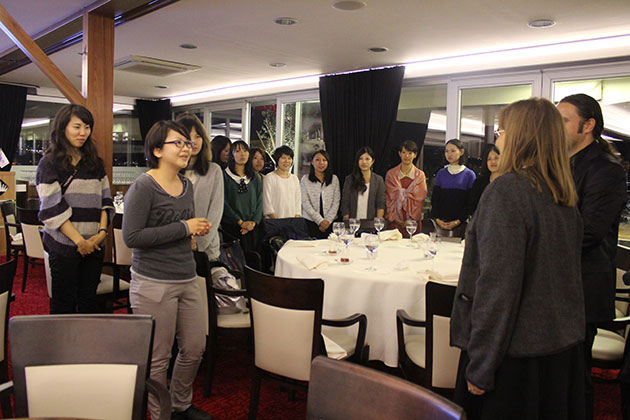 |
| After dinner: a speech of thank for the occasion |
| |
Today we had a training course at a municipal organization of Istanbul, KUDEB, which specializes mainly in the restoration of wooden architecture. After hearing the outline of KUDEB we went to the bottega to see a replica of the door from Suleymaniye Camii, a framing model of an existing construction which has actually undergone restoration, and a restoration work of the door from a 130 years old house once stood in the Zeyrek district. Then we observed the office building of KUDEB, which is an example of restoration itself. It was a residence of a naval officer in power back in 1850s, which KUDEB is restoring taking time while using it as their office. We concluded the course at KUDEB with a visit to a wooden house in Suleymaniye district, which KUDEB has restored. Leaving KUDEB we visited Suleymaniye Camii to make sketches of it. For the dinner we were invited by Dean Sema of Faculty of Architecture and Design. |
|
|
|
October 8, 2013
Practical training of restoration work at Yildiz Palace and visit to Dolmabahce Palace |
|
| |
|
|
|
 |
| Bottega at Yildiz Palace |
|
 |
| Shell work studio: Shells are shown. They used to use sea shells from Egypt or Syria in the Ottoman Empire days. |
|
 |
| Upholstery fabric studio: a staff is showing repaired part on the backside of the seat. |
|
 |
| Furniture finishing studio: students as listening to the explanation of finishing material (a type of lacquer) |
| |
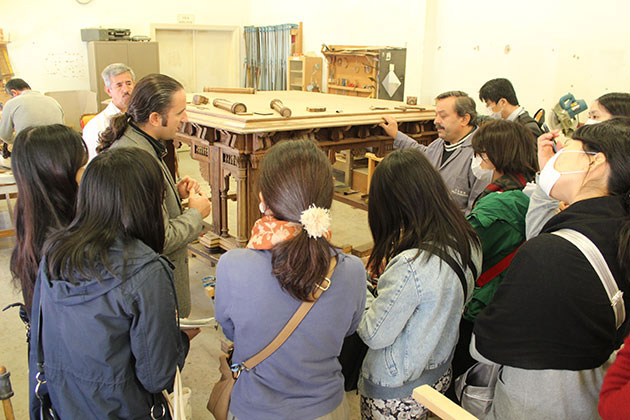 |
| Wood work studio; restoration of the table from Istanbul University being explained |
| |
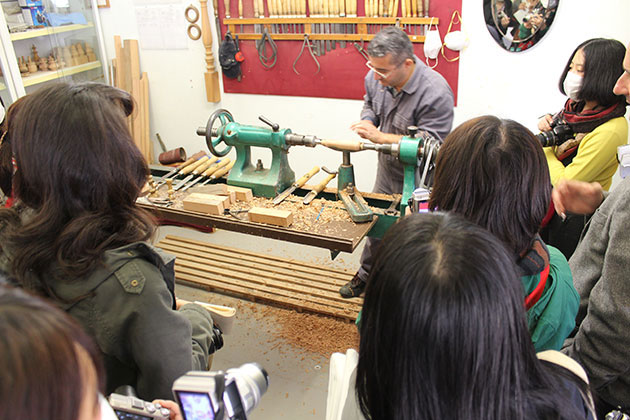 |
| Wood work studio: Wood is processed spinning the material at a high speed using machine. We asked the staff to make a pattern sample of the handle of the file for us. |
| |
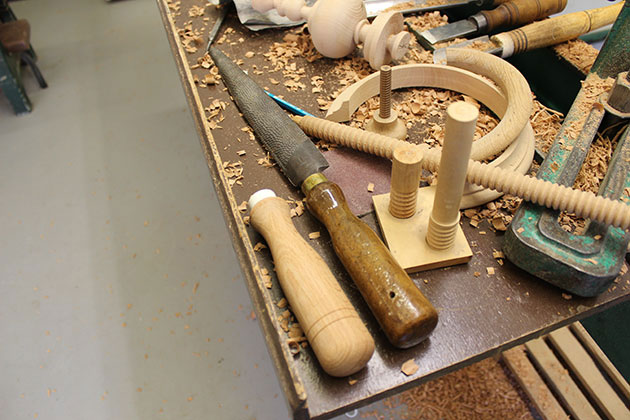 |
| Wood work studio: the pattern sample of the handle made for us |
| |
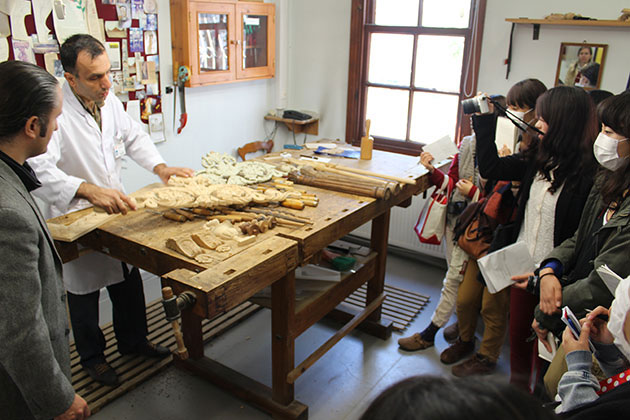 |
| Furniture ornament studio: processed wood from the wood work studio is decorated here. |
| |
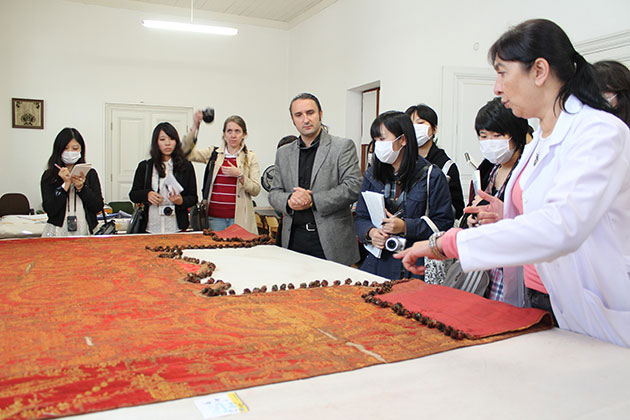 |
| Textile studio: students as listening to an explanation of the restoration work of the drape from Dolmabahce Palace |
| |
 |
| Fixture studio: students as listening to an explanation of the restoration work of the window sash from Dolmabahce Palace |
| |
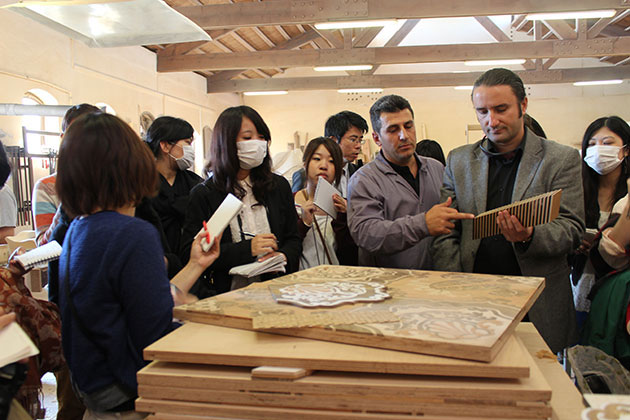 |
| Parquet flooring studio: students as listening to an explanation of the parquetry processing |
| |
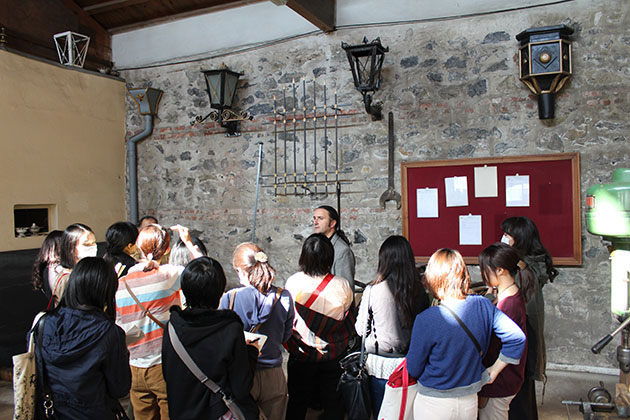 |
| Metal work studio: lamps, drains, window sash etc. are restored here. |
| |
 |
| Metal work studio: tools for the ongoing restoration work are all fabricated in this studio. |
| |
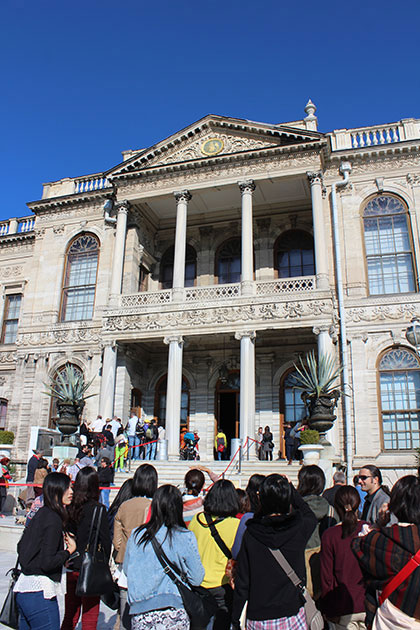 |
| Visit to Dolmabahce Palace: we could summarize what we have learned during the past two days reconfirming the results of restoration observing the actual conditions of furniture and fixtures which had been repaired at the studios. |
| |
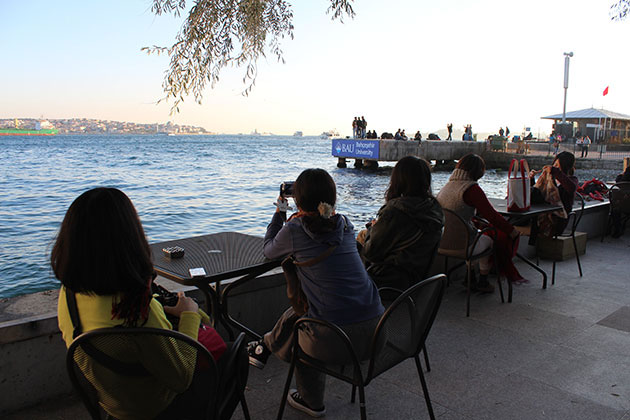 |
| Newly constructed port of Bahcesehir University: a break at a cafeL in the harbor. Ferries to connect the campuses of the university sail into port here. |
| |
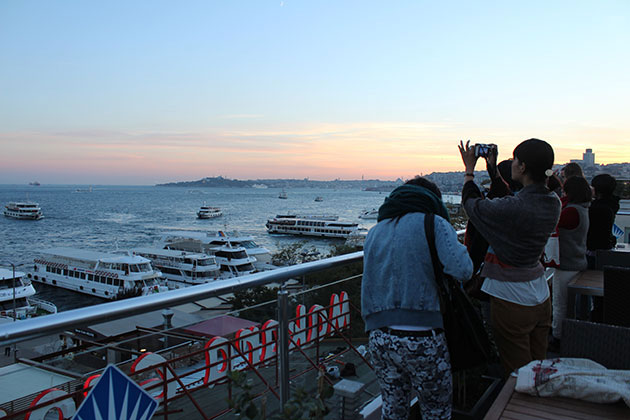 |
| The rooftop terrace of Bahcesehir University: view of the Bosphorus Strait in sunset color |
| |
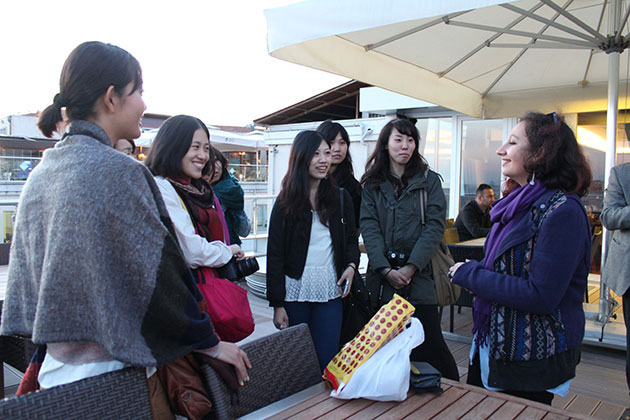 |
| Students as exchanging with a Turkish student |
| |
Today we had a restoration practice at the bottega in Yildiz Palace. Alike the one at the Dolmabahce Palace where we practiced yesterday, it is a national bottega which is engaged in the restoration of Dolmabahce and the other national palaces across the country. We could visit studios of shell work, upholstery fabric, furniture finishing, wood working, furniture ornament, textile, fixtures, parquet flooring material, and metal work. Then we observed the Dolmabahce Palace and summarized what we have learned during the two daysf experience in restoration and repair works observing the furniture and fixtures placed in the palace and confirmed how they had been restored at the bottega. Finally we went to the Bahcesehir University, where we could enjoy the view of beautiful Bosphorus Strait at sunset. |
|
|
|
|
|
|
|
|
|
|
|
October 3, 2013
Visit to Bursa |
|
| |
|
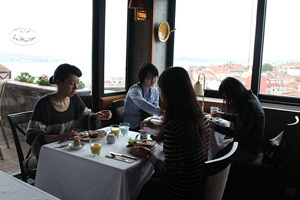 |
|
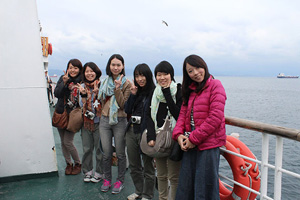 |
| Breakfast at the hotel in Istanbul |
|
On board the ferry bound for Bursa |
|
|
| |
 |
| Cumalikizik |
| |
|
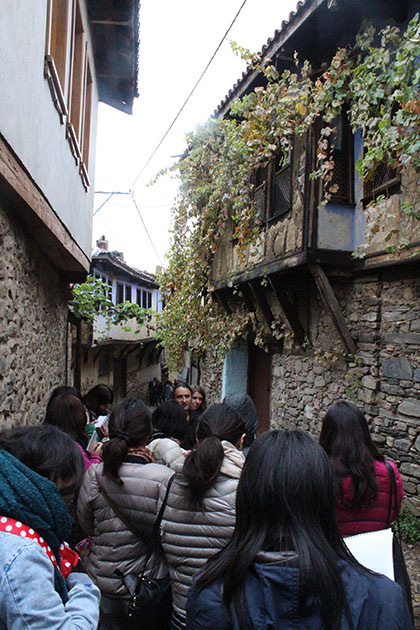 |
| Cumalikizik: students as listening to an explanation of Cumba, a jutted structure on the second floor |
|
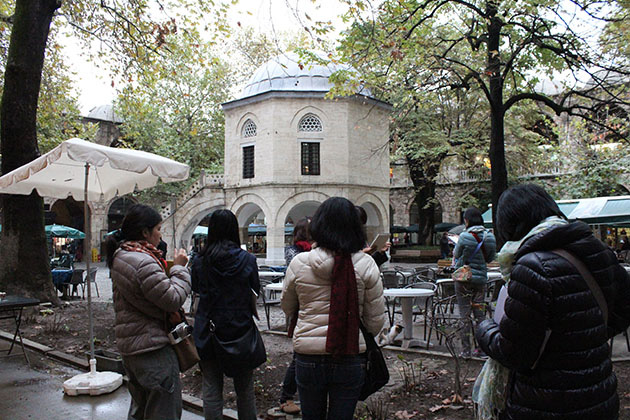 |
| Bursa: students as sketching a Camii in the courtyard of one-time caravansary Koza Han |
|
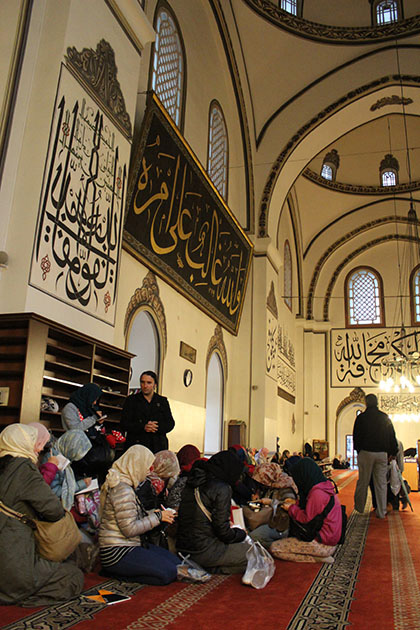 |
| Students as listening to Professor Muratfs explanation at Ulu Camii |
| |
 |
| Students as sketching at Ulu Camii |
| |
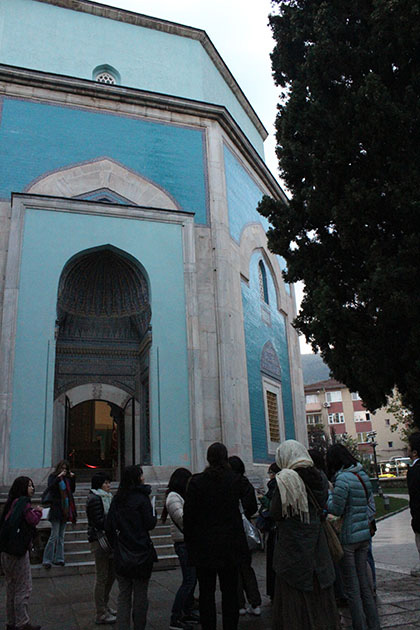 |
| Yesil Turbe |
| |
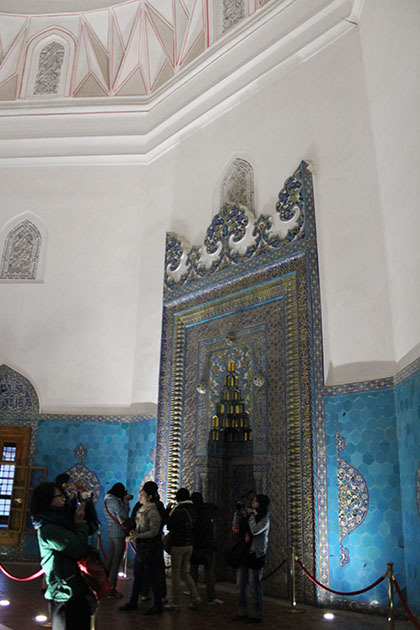 |
| Yesil Turbe |
| |
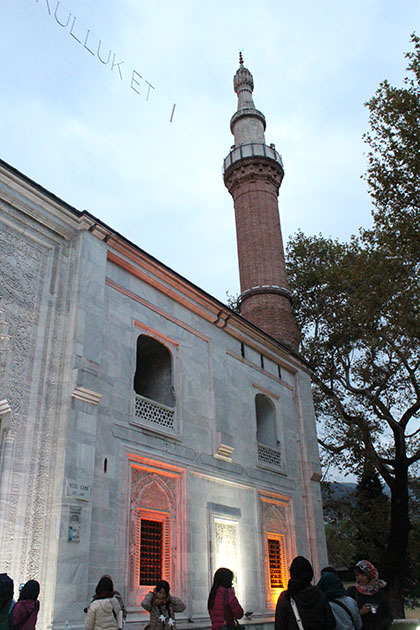 |
| Yesil Camii |
| |
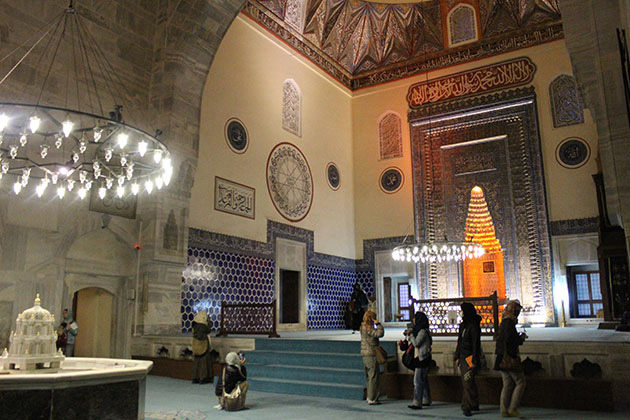 |
| Yesil Camii, whose restoration work has just completed after 3 years |
| |
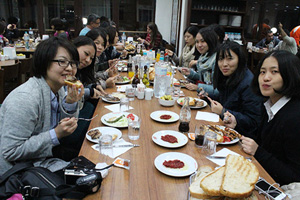 |
| Supper at the well known Kofte shop in Iznik |
| |
Today we visited Bursa, the first capital of the Ottoman Empire. To begin with, we observed traditional colony called Cumalikizik, which has 700 yearsf history. The colony has come to attract attentions in the past decade, and today, we see active preservation and restoration work of the buildings. After strolling along the lanes of labyrinth we had lunch on a semi-indoor/outdoor terrace space. Then we moved to the central area of Bursa to see such places as a caravansary called Koza Han, Ulu Camii, which means ebig Camiif, Yesil Turbe (literally, egreen tombf), where Mehmed I sleeps, and Yesil Camii, or egreen Camiif. |
|
|
|
|
| |
Hotel |
|
Appearance |
| |
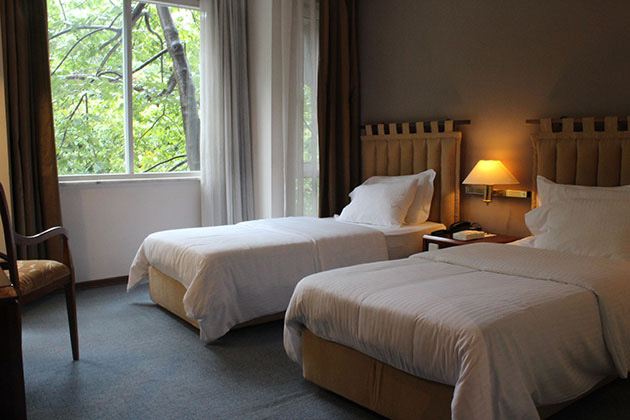 |
Guest room |
| |
| >>2012@@>>2011@@>>2010 |
|
| >>TOP |
Copyright 2005-2013 Mukogawa Women's University.All rights reserved.
|

